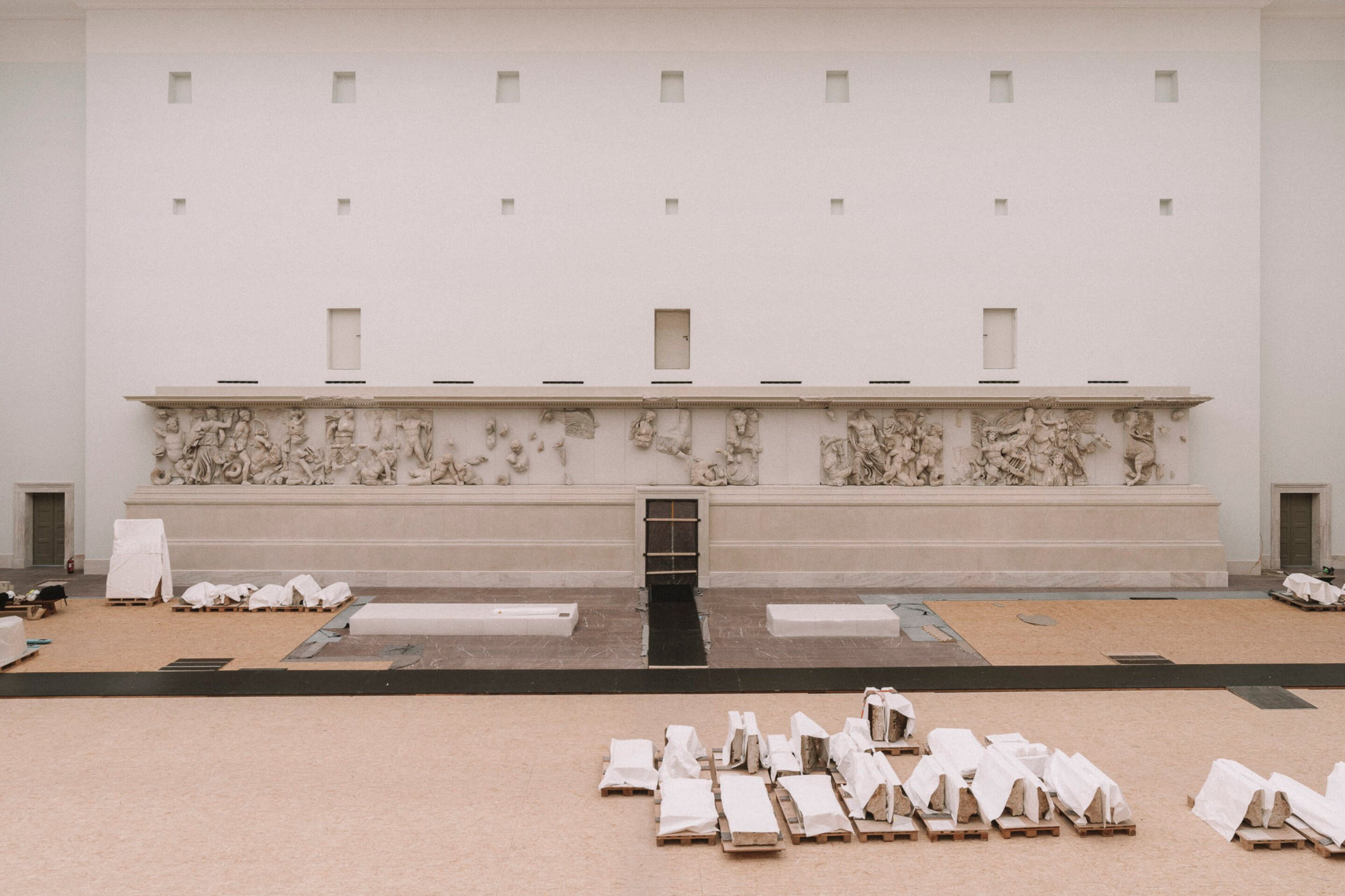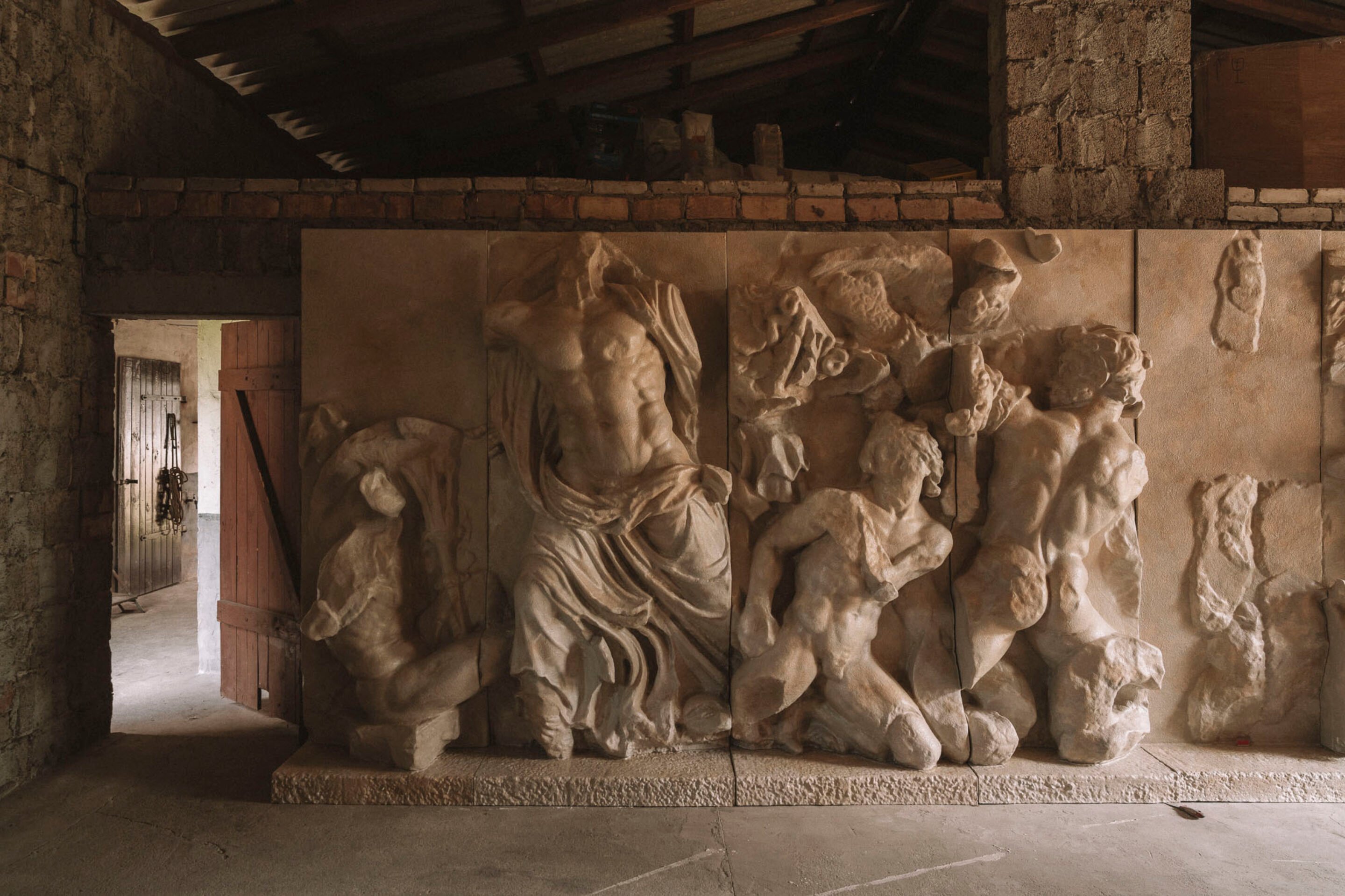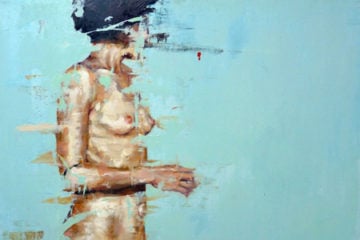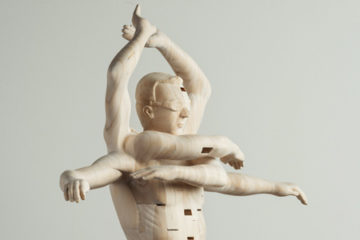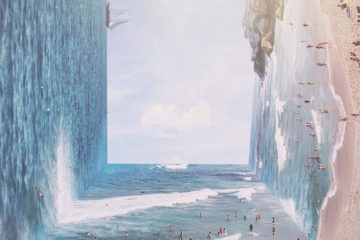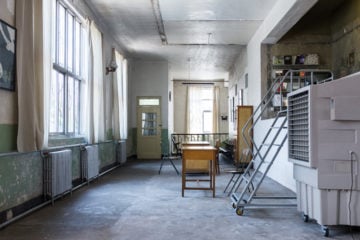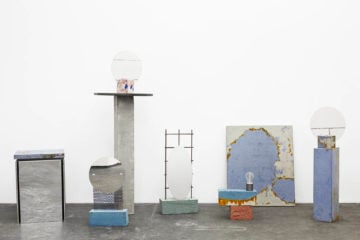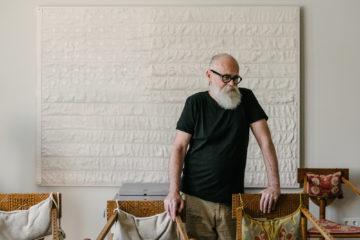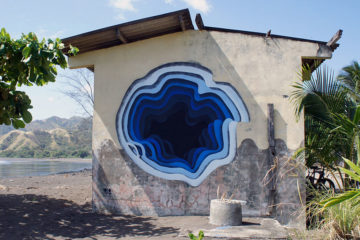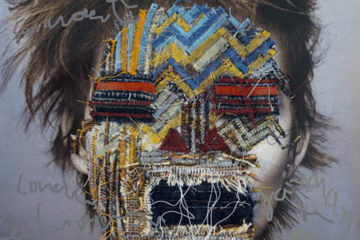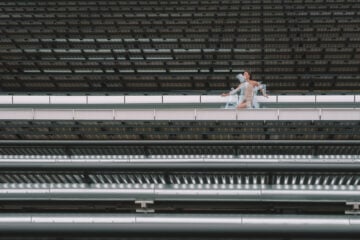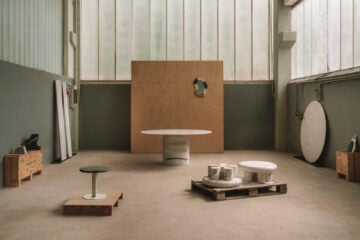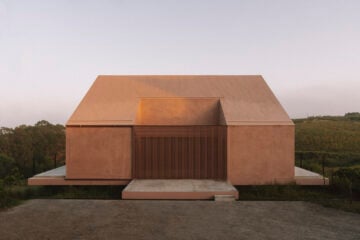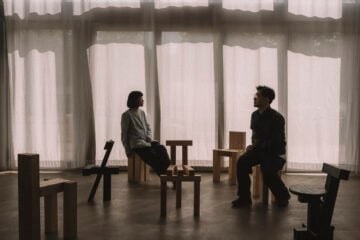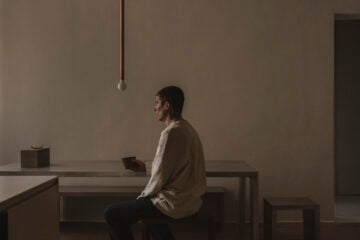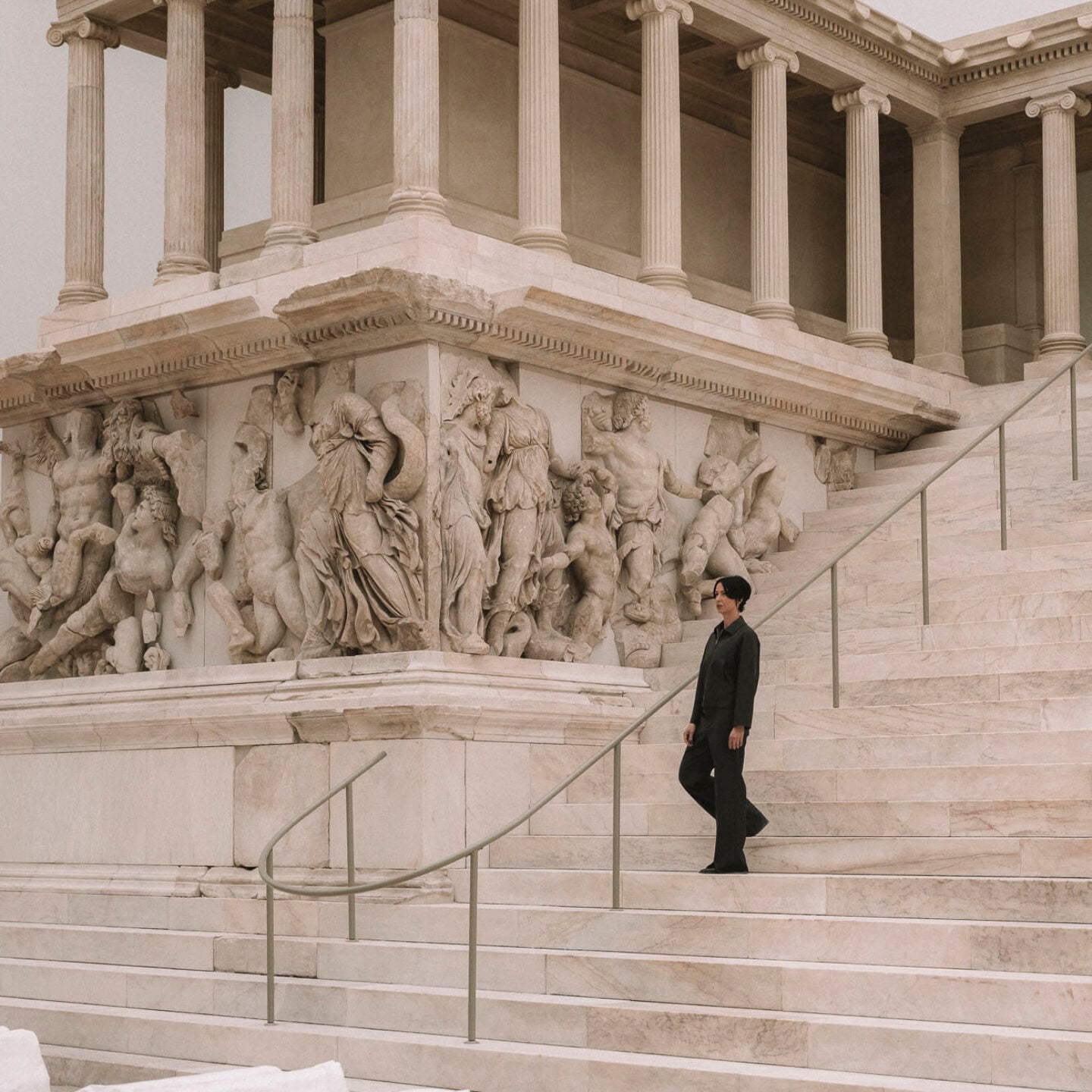
“History is a Battleground”: Zuzanna Czebatul and the Pergamon Altar
- Name
- Zuzanna Czebatul
- Images
- Clemens Poloczek
- Words
- Rosie Flanagan
Zuzanna Czebatul is interested in the way monuments shape and perform power. Through her sculpture-based practice, she distorts architectural forms and cultural relics—columns, obelisks, busts—to reveal and complicate the narratives they once held. In the bucolic calm of her Brandenburg studio, and later among shrouded objects and scaffolding in Berlin’s long-closed Pergamon Museum, Czebatul spoke with Ignant about one of Europe’s most symbolically charged monuments—the Pergamon Altar. Her fragmented reimagining of the Hellenistic frieze takes centre stage in All the Charm of a Rotting Gum, which opened at DITTRICH & SCHLECHTRIEM on the occasion of Gallery Weekend Berlin.
In 1878, German engineer Carl Humann began excavating a site in western Turkey. Here, he and his team unearthed fragments of a monumental building constructed under the reign of King Eumenes II in the Second Century BCE. The Pergamon Altar sits on a raised platform, its dramatic form framed by delicately fluted Ionic colonnades and completed with two friezes: the larger depicts the Gigantomachy, a cosmic clash between gods and giants, and the smaller tells the story of Telephos, the mythical founder of Pergamon. This building and its reliefs, rendered with both physicality and violence, are political and religious propaganda: asserting the king’s rule as divine order, aligning him with the gods of Olympus and Pergamon with the cultural legacy of classical Athens.
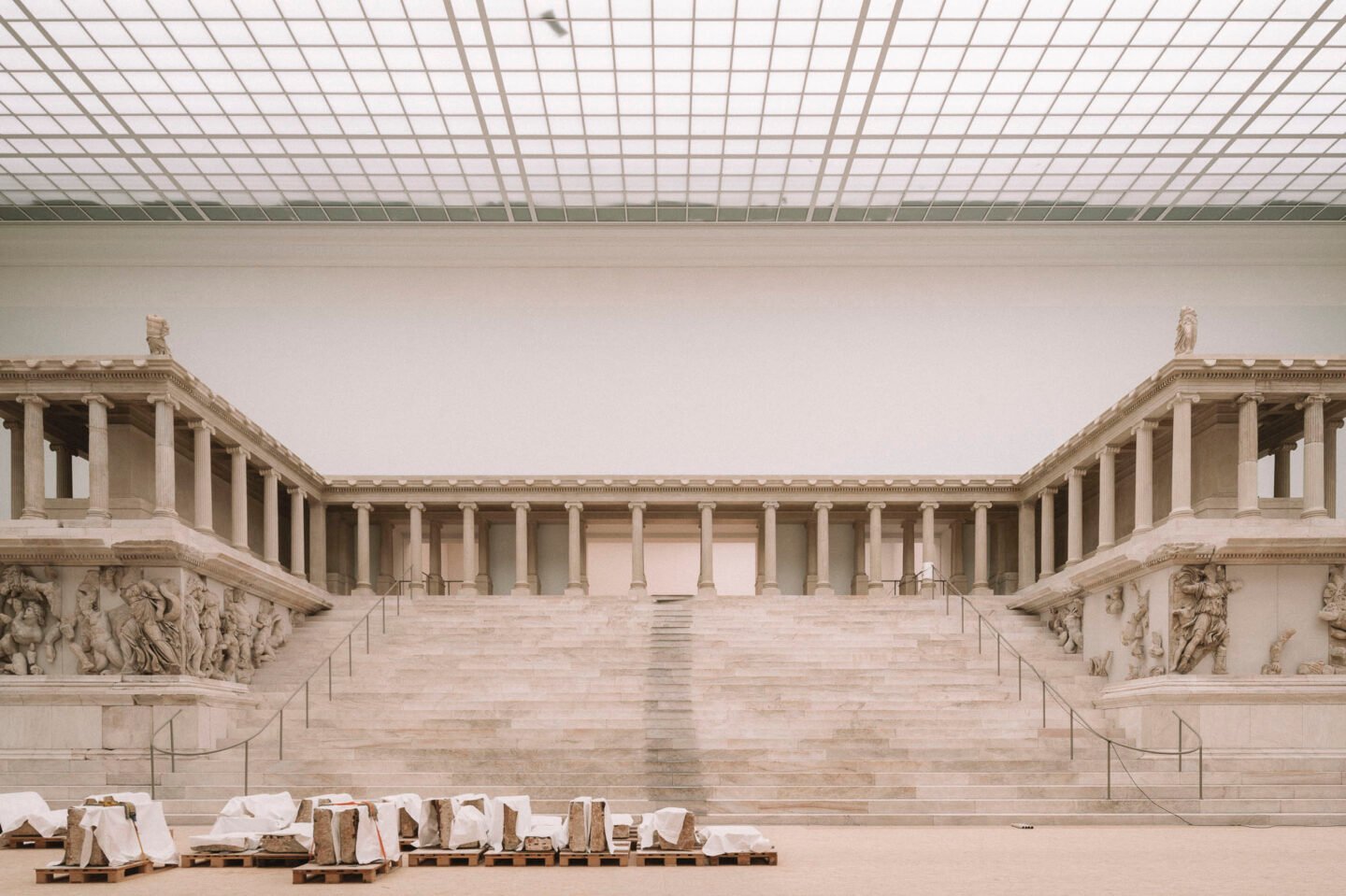
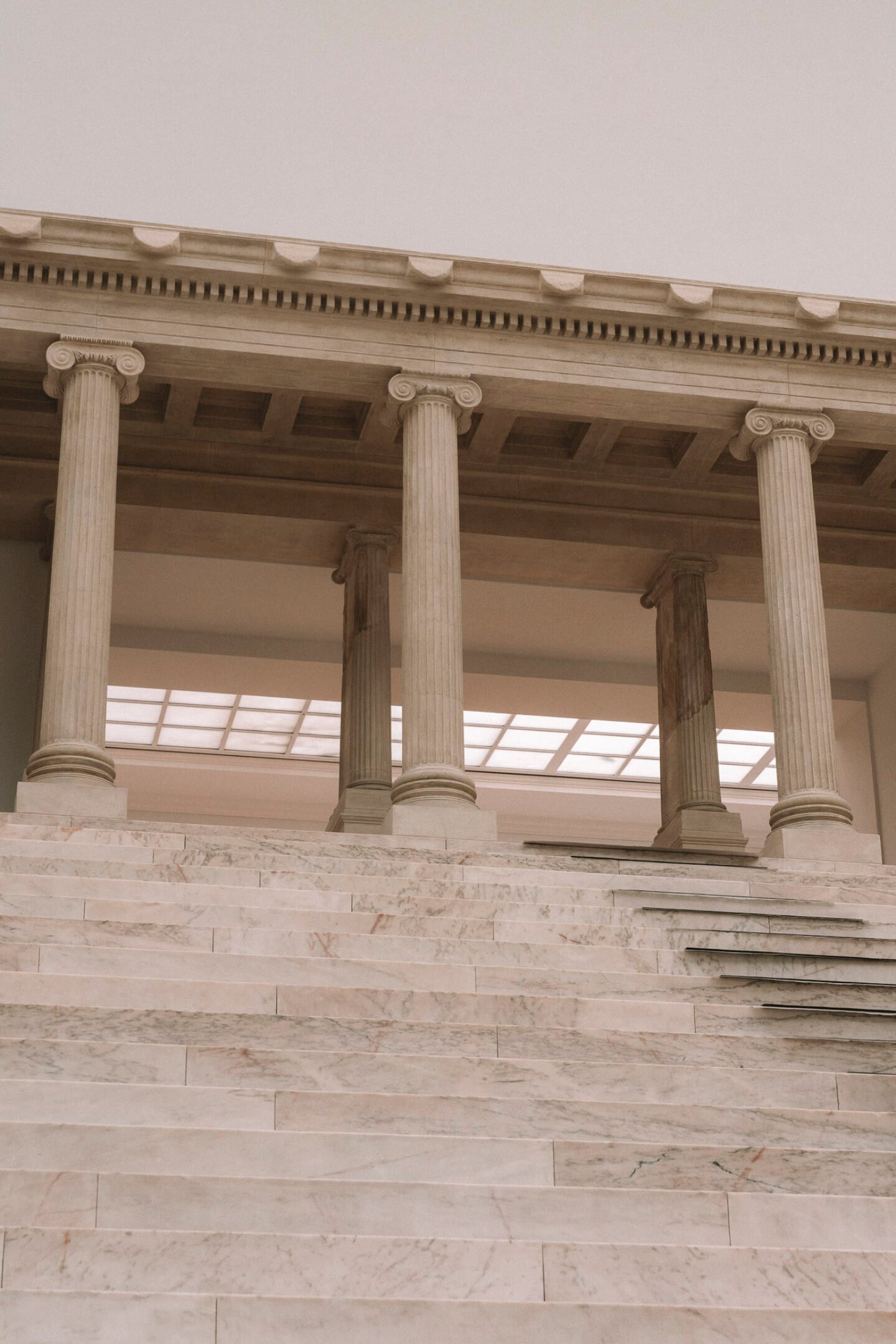
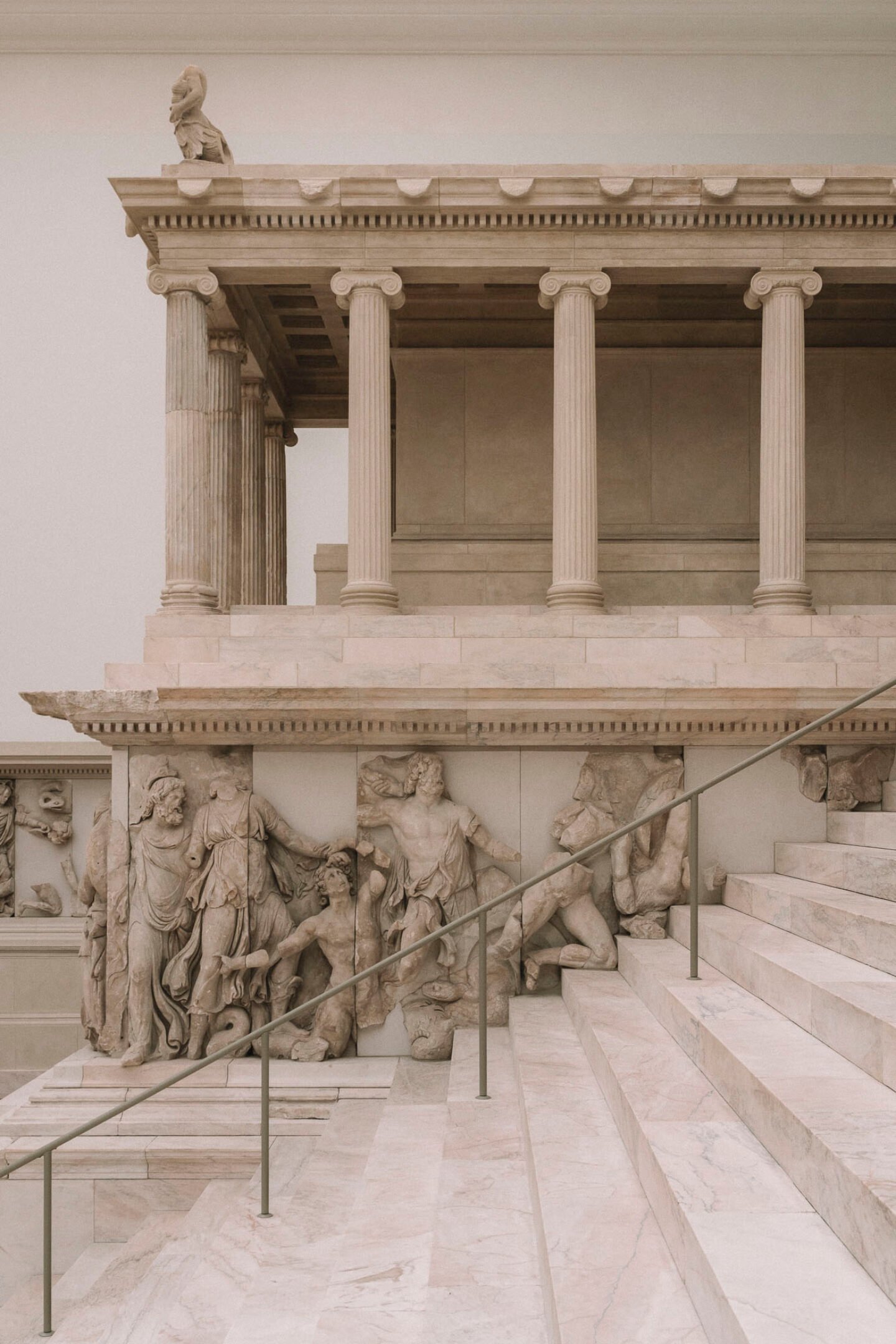
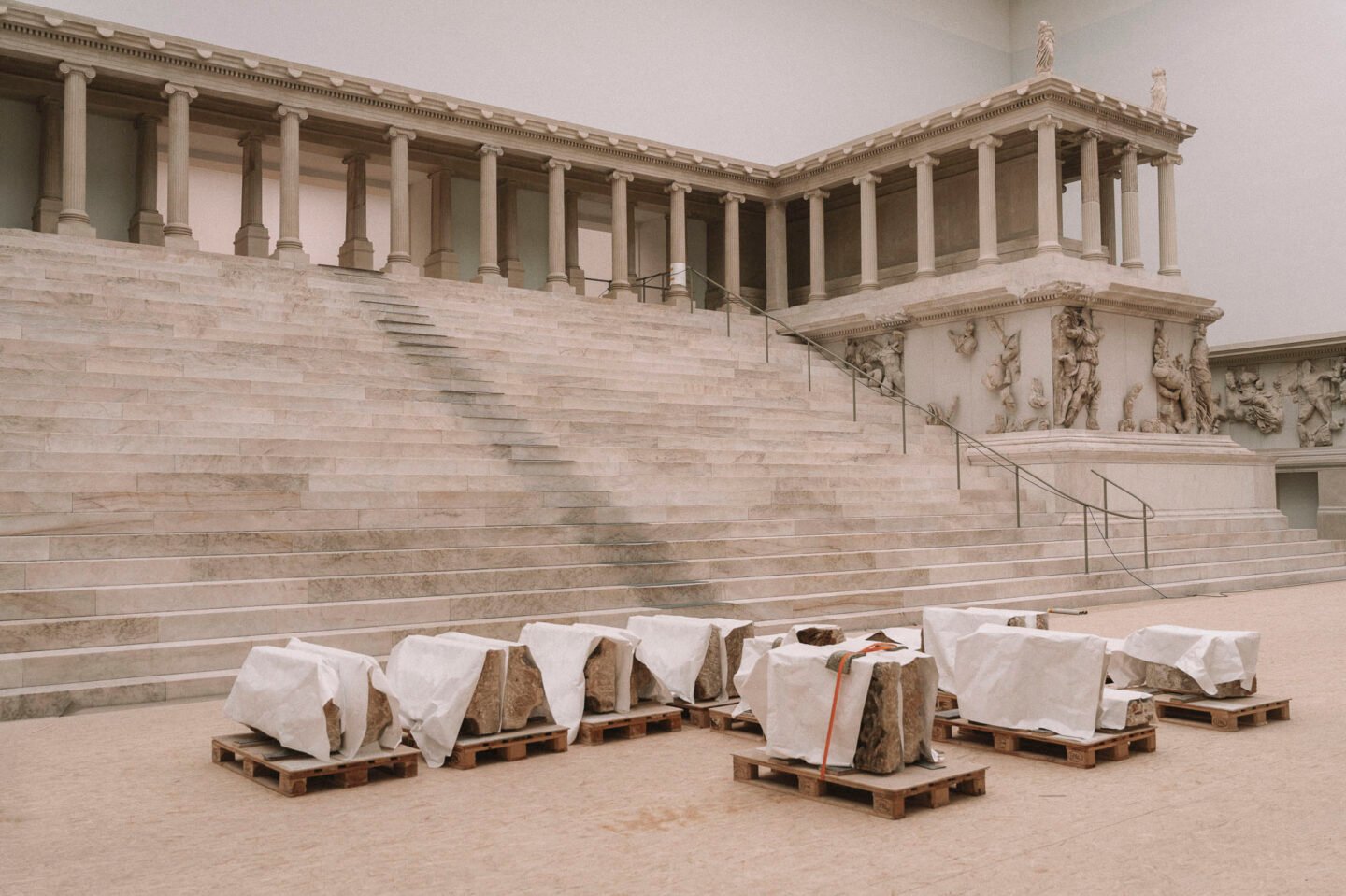
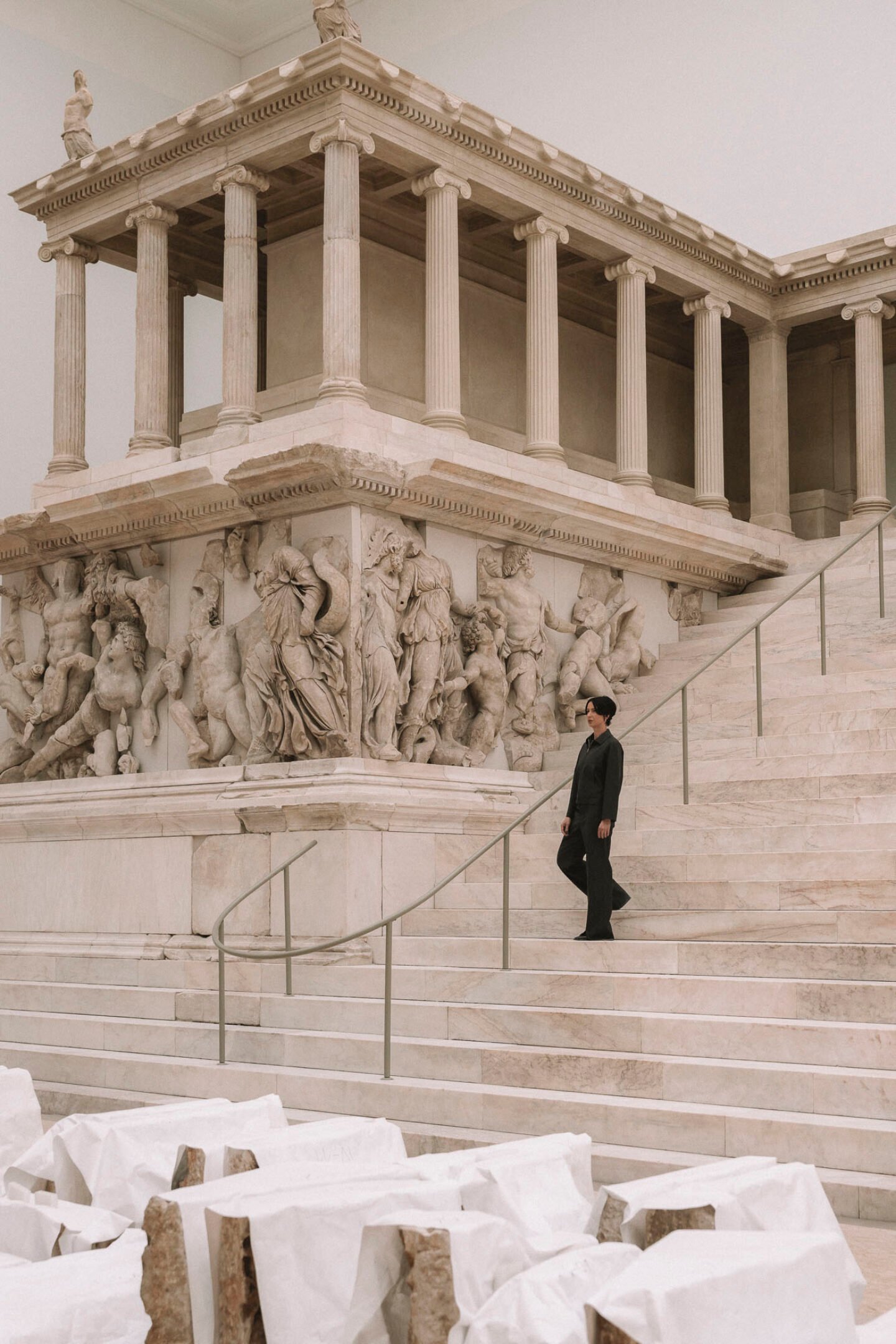
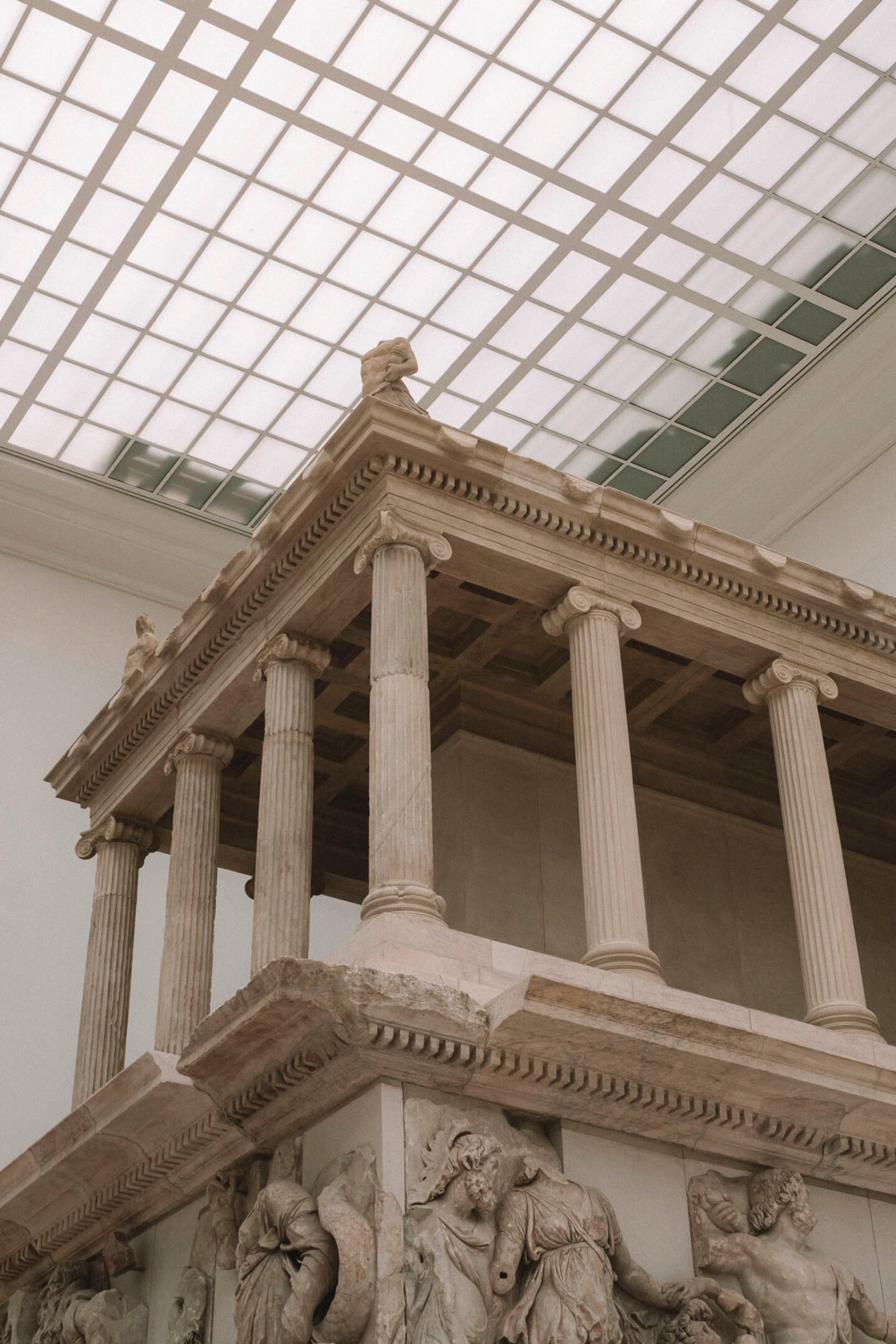
"The Pergamon Altar, as one of the most monumental icons housed in Berlin, encapsulates so many layers of that authority: imperialism, myth-making, extraction, cultural pride, and supremacy."
In the early 1900s, the Pergamon Altar was reassembled—from fragments and conjecture—in Berlin, and the Pergamon Museum was built to frame its grandeur. Today, as conversations around restitution and the extractive logic of museums intensify, the altar’s presence in the German capital feels uneasy, its fractured mythology connected to larger questions of display, ownership, and the power structures that continue to shape Western institutions. “The Pergamon Altar, as one of the most monumental icons housed in Berlin, encapsulates so many layers of that authority: imperialism, myth-making, extraction, cultural pride, and supremacy,” Czebatul says. “It’s not just an ancient artefact; it’s an active object—one that continues to shape how we understand European culture and its historical legitimacy.”
Due to the ongoing renovation of the Pergamon Museum, the altar has not been accessible to the public since 2014. Aside from a brief visit, Czebatul worked without access to the monument itself. This absence, she says, became a generative force: “The closure creates a vacuum that invites reinterpretation. Without the physical altar and its museal presentation dictating how we must see it, there’s space to explore new readings. In All the Charm of a Rotting Gum, the altar is no longer a frozen symbol of triumph. It becomes porous and unstable—full of tension. The closure becomes an opportunity to treat the altar not as an untouchable relic, but as a living, shifting fragment of contested meaning.”
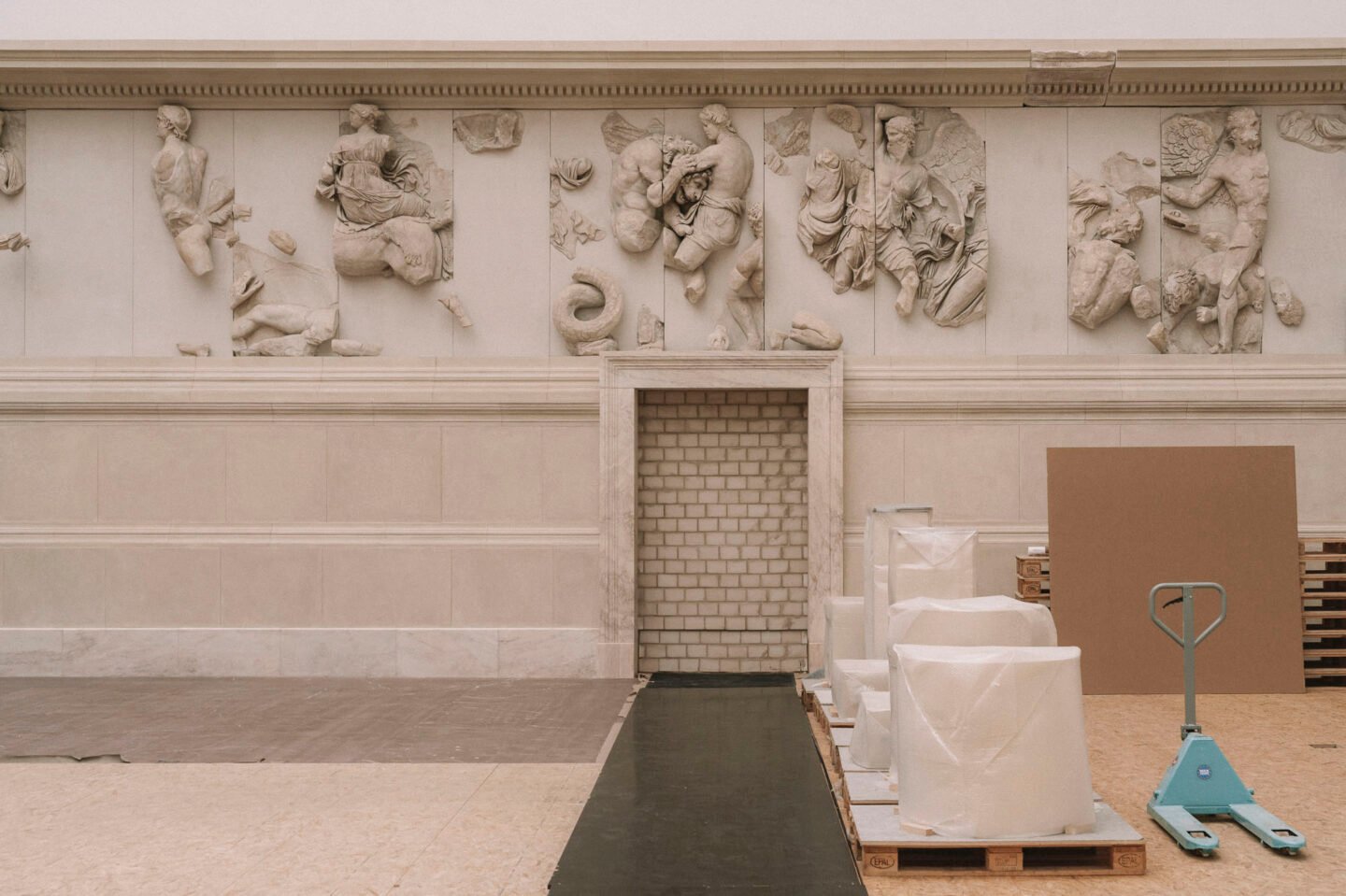
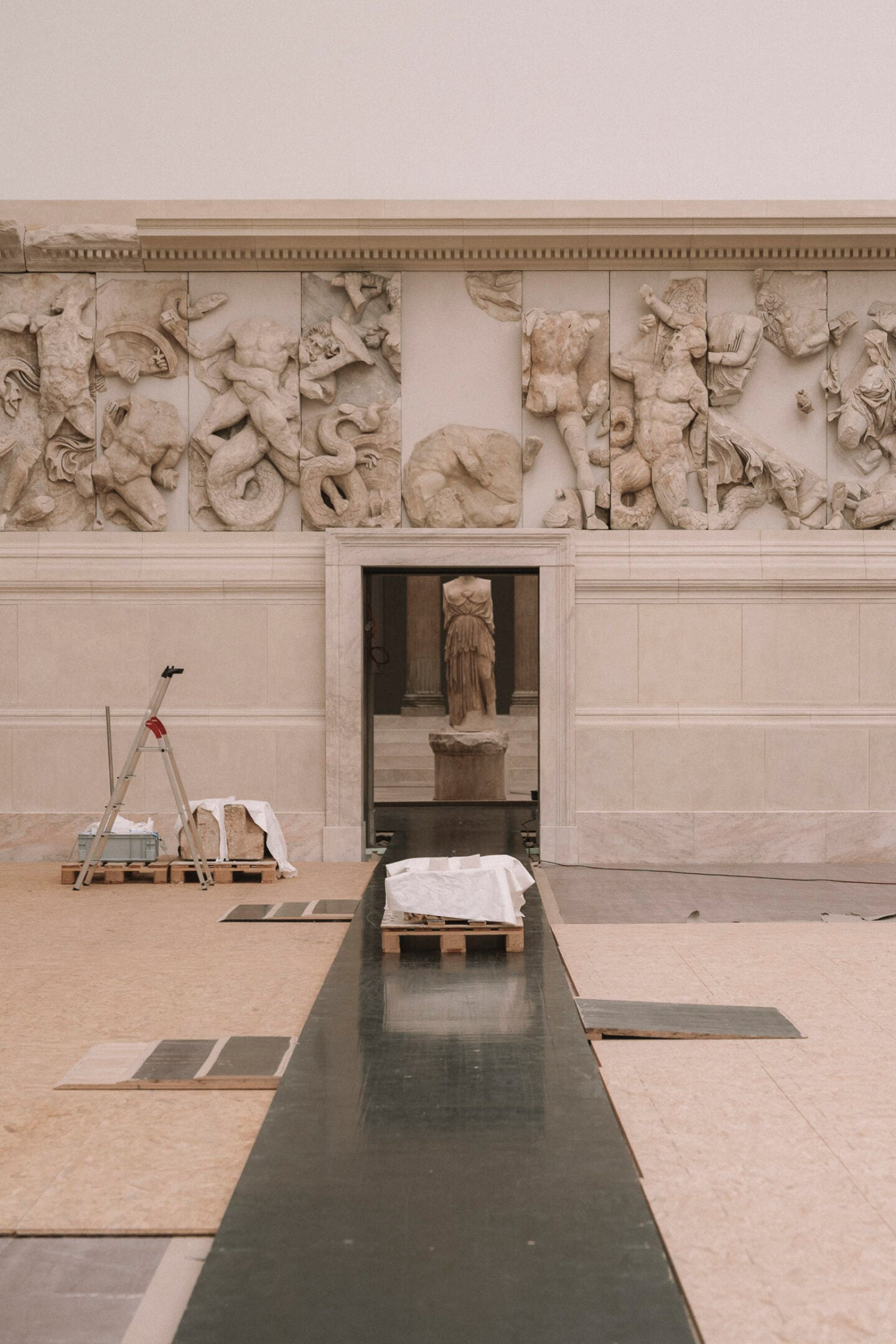
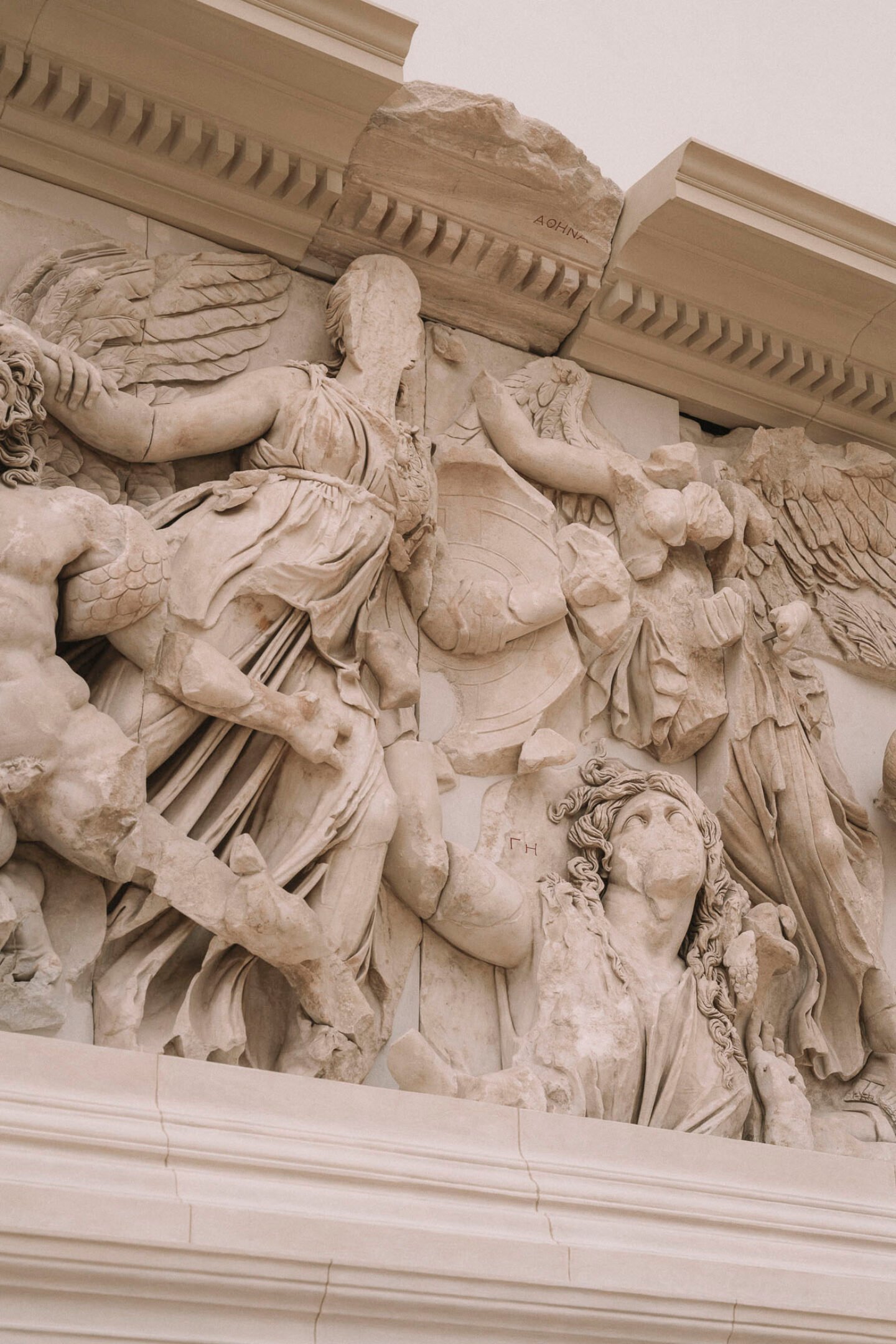
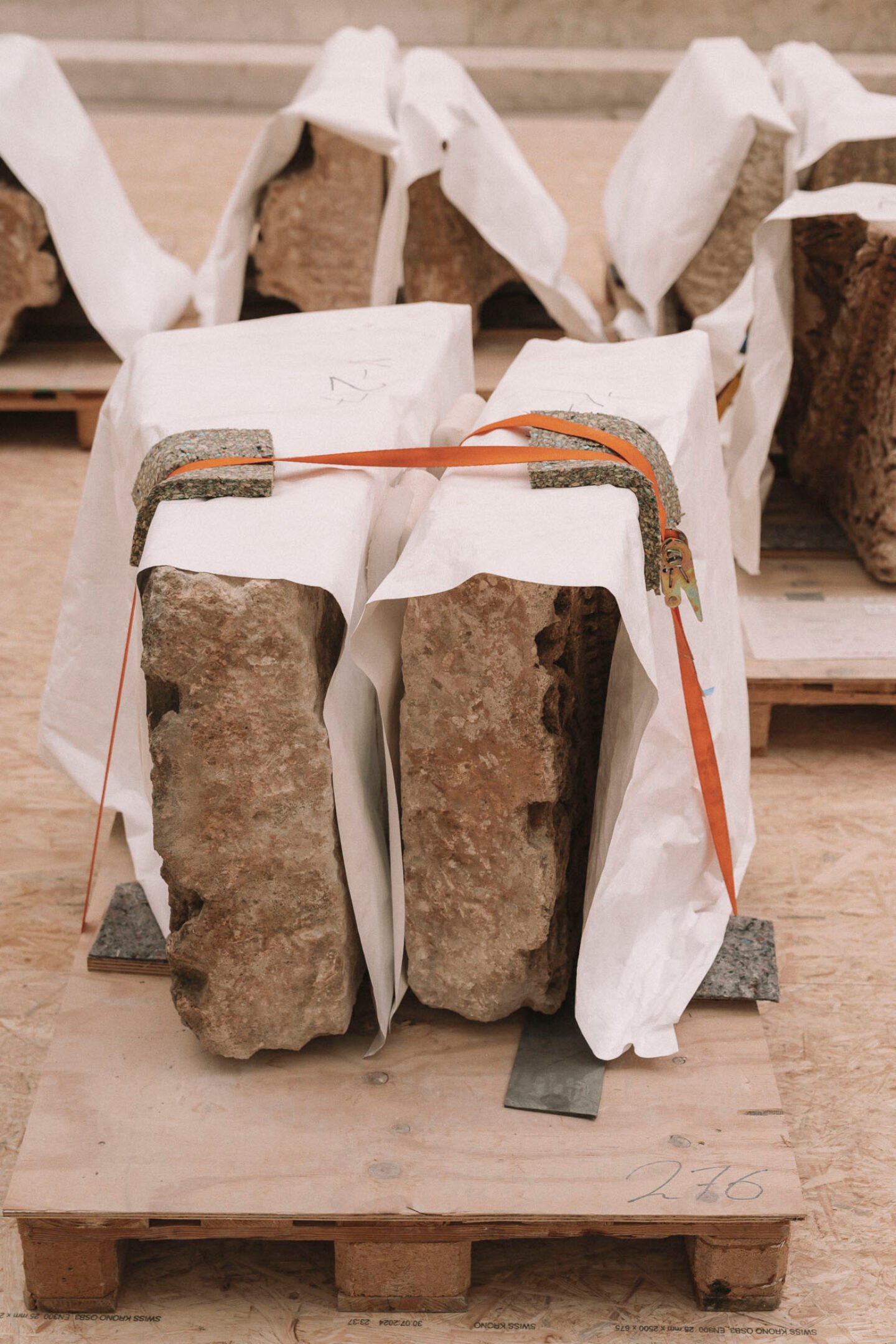
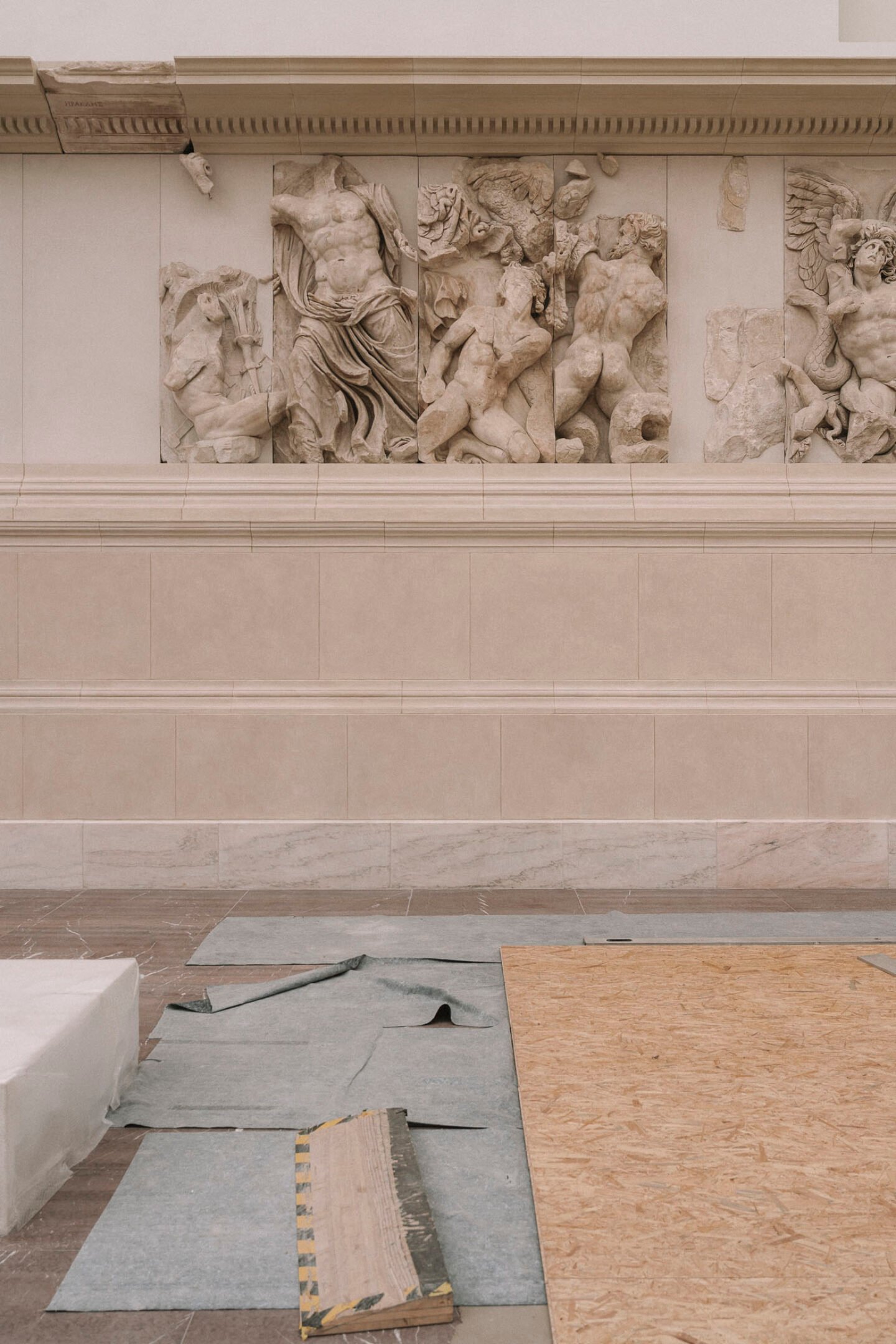
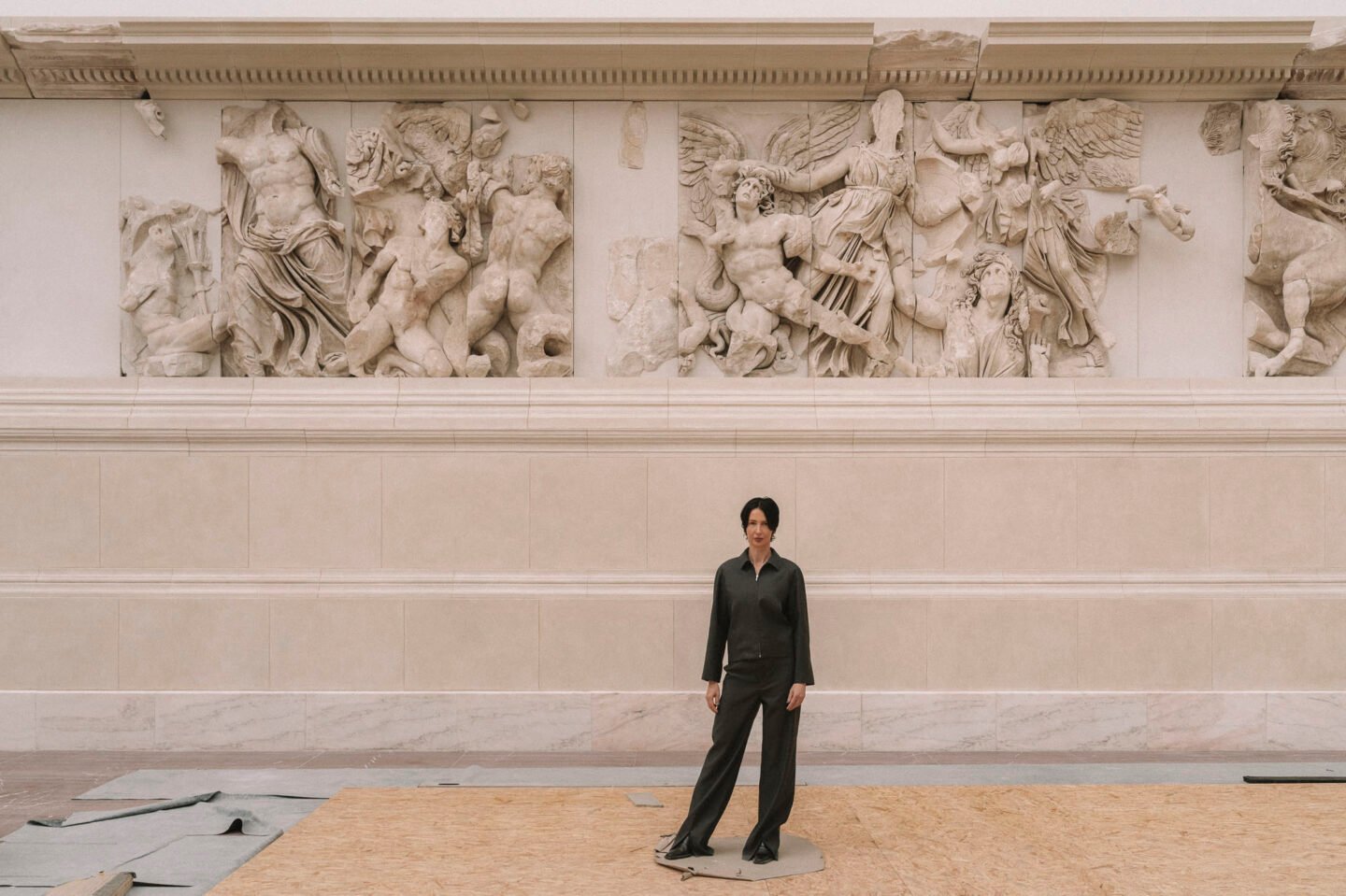
Czebatul’s research for the exhibition led her to Bergama, an experience she said allowed her to better understand the effort and resources required to excavate and transport the relic from the acropolis to the port of Smyrna and onto Berlin. Taking these insights back to her studio in Brandenburg, she used the museum’s 3D scan of the altar alongside archival material and archaeological records to recreate fragments of the Gigantomachy frieze. “In appropriating this world heritage, I had to find a balance between honouring the mythological charge of the original frieze and critically unsettling it, turning the monument into something unstable, provisional, almost ritualistic again,” Czebatul explains. The final part of the project came with the installation of the work in Berlin, “where the work enters into dialogue with the city’s dense and conflicted history.”
“By revisiting this myth—already a representation of its creators’ self-image—I wanted to challenge the simplistic binary of ‘order versus chaos.’"
Her decision to focus on reliefs from the Gigantomachy carries symbolic weight. Across millennia, this story of the gods defeating the giants has been used to legitimise power as natural and empire as order. It’s a discourse Czebatul sees resurfacing today, as nationalist and authoritarian ideologies gain renewed traction around the world. “By revisiting this myth—already a representation of its creators’ self-image—I wanted to challenge the simplistic binary of ‘order versus chaos.’ Many historians argue that Germany’s darkest chapter, leading to the Second World War, was significantly shaped by an uncritical embrace of exactly this dichotomy that came with this artefact. Finally the young nation was able to position itself alongside the Louvre and the British Museum, mirroring itself in the superiority of the Greek gods. In light of the recent reconstruction of the Humboldt Forum, we can draw an unsettling line back to the beginnings of that era—a symbolic revival of imperial thinking disguised as cultural restoration.”
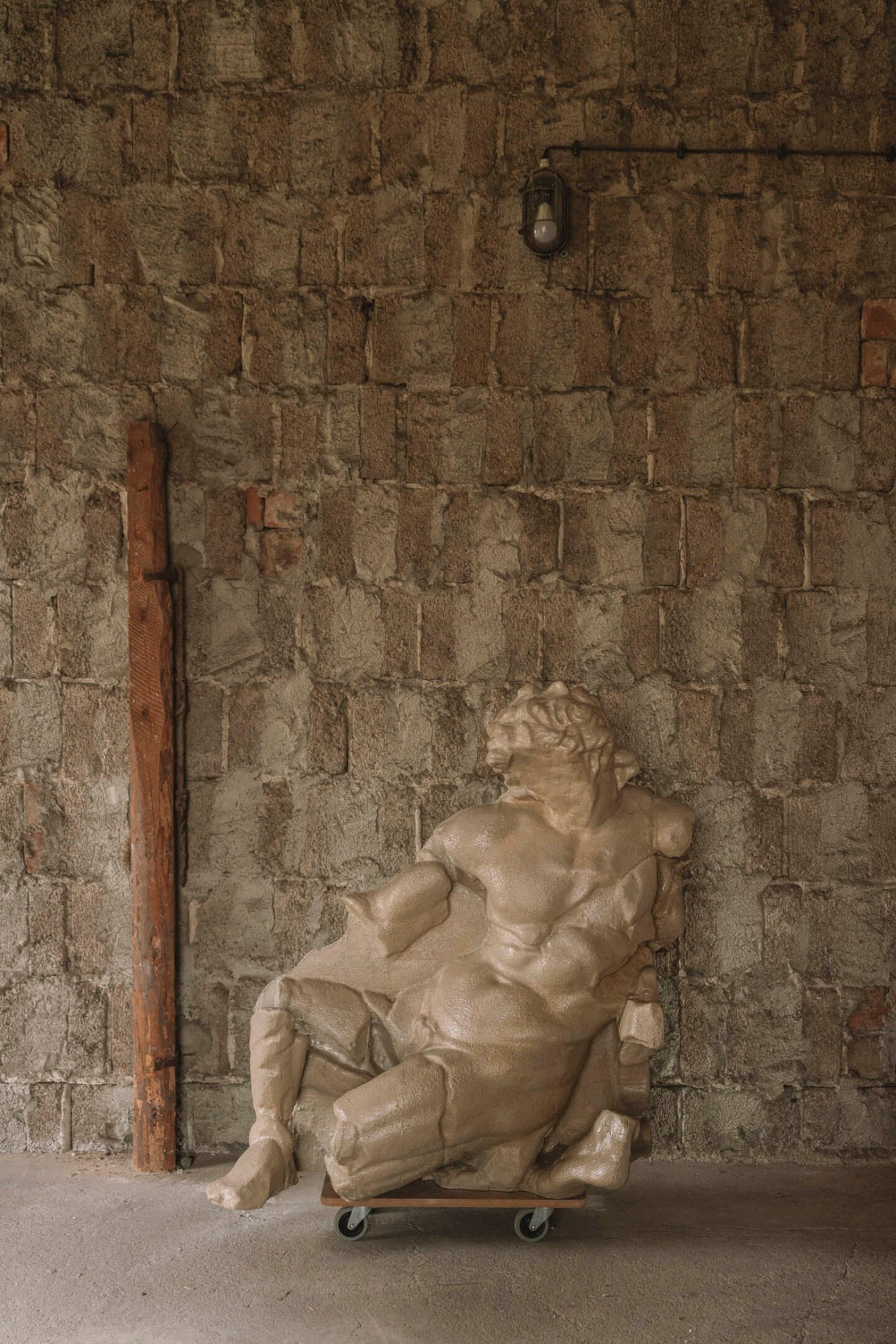
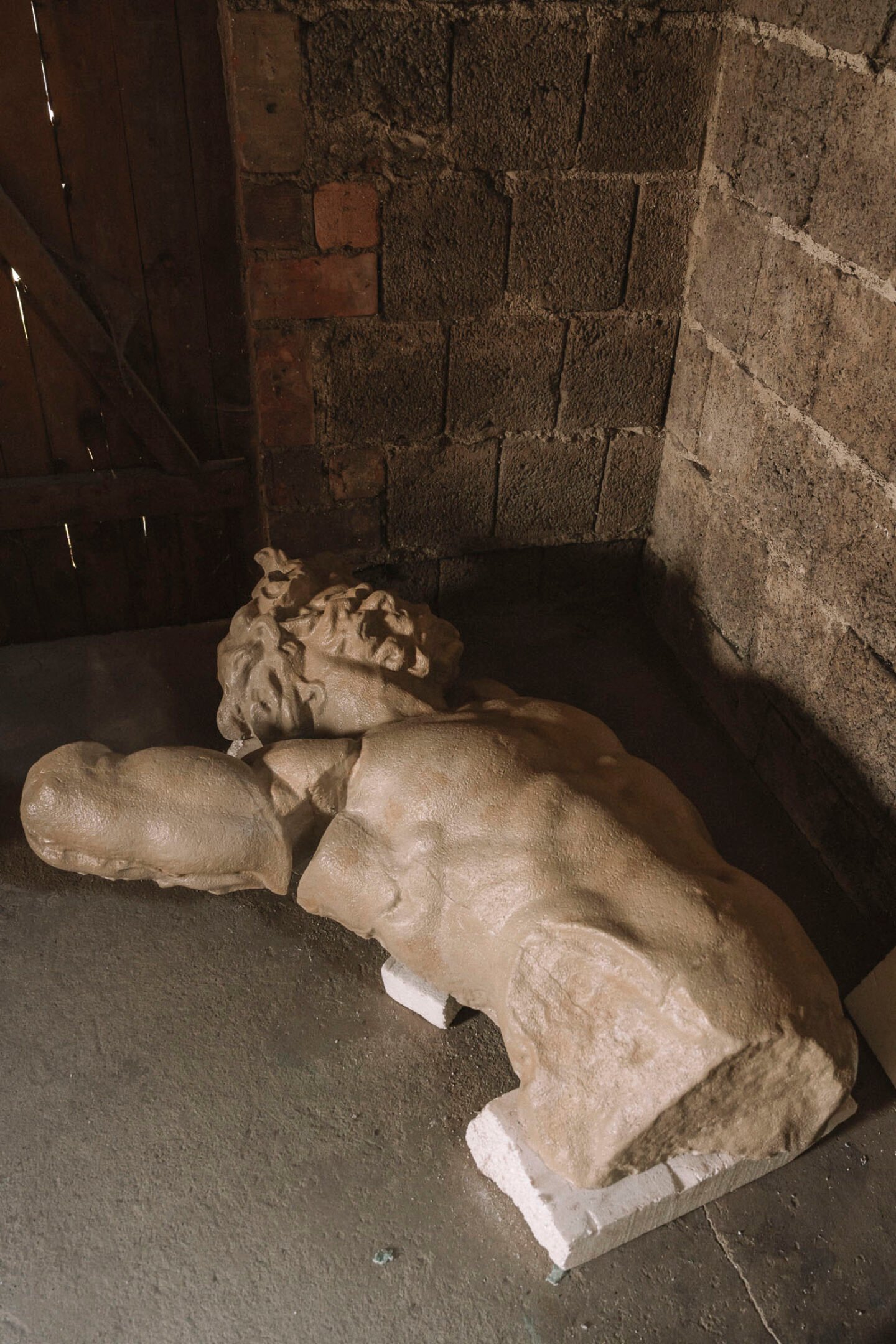
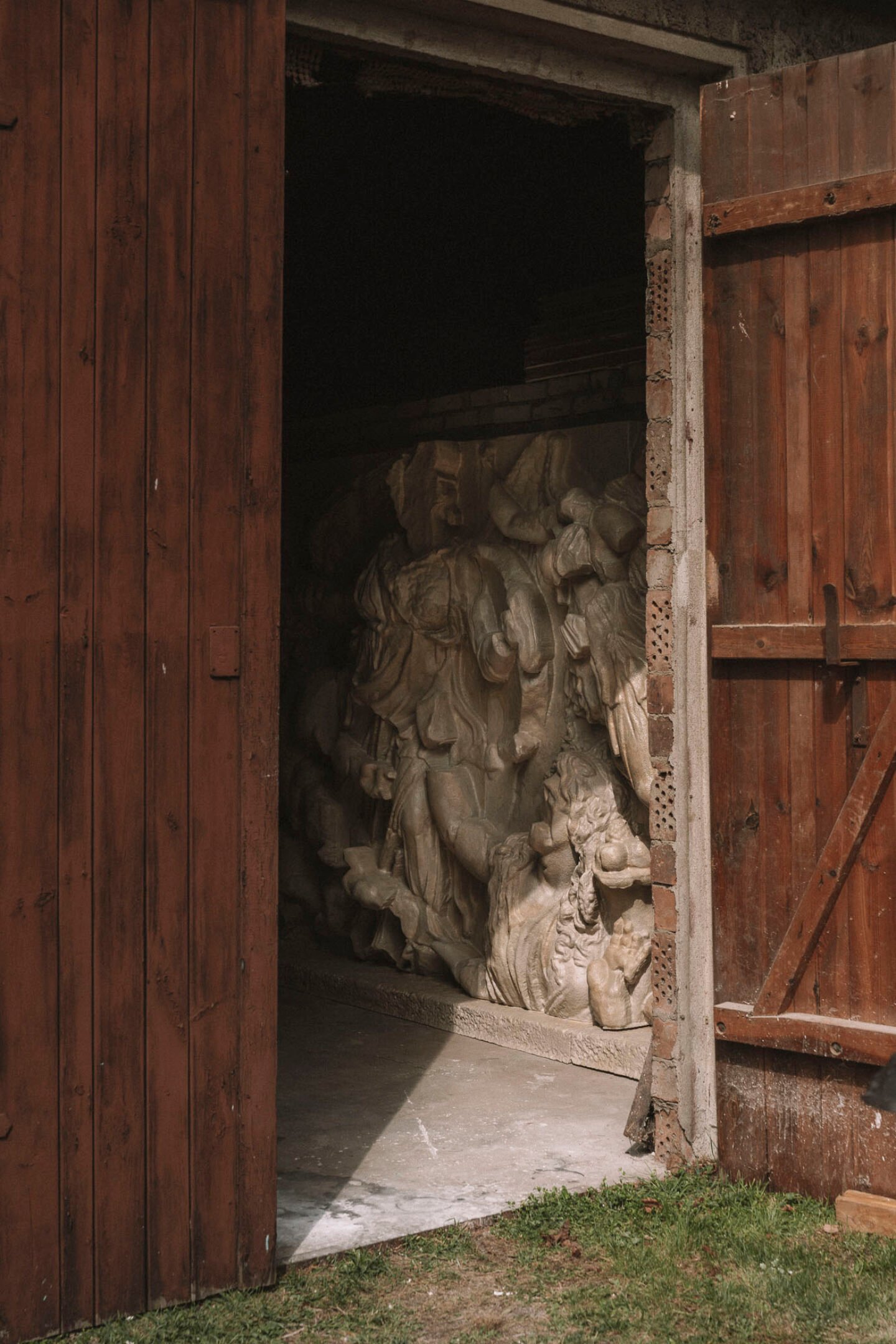
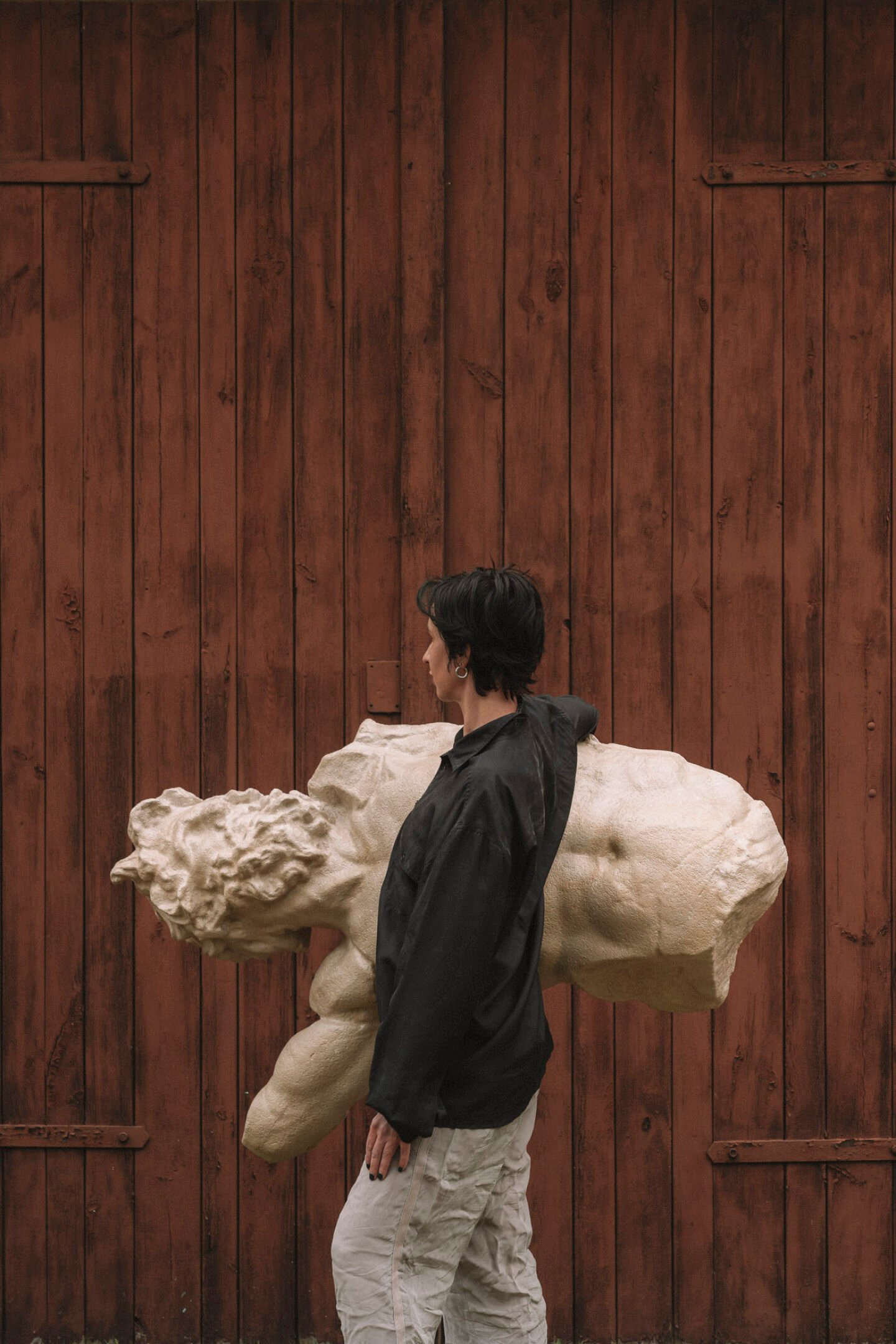
"I want to invite all of us to reflect on the historical and contemporary implications of how this heritage has shaped Germany’s cultural identity."
The arrival of the Pergamon Altar in Germany is often portrayed as a triumph of preservation: a narrative that overlooks the colonial context of its acquisition and the nationalist agenda it was used to further. Two millennia after it was built to glorify a Hellenistic king, it was enlisted by the new German Empire to assert its place in the hierarchy of Europe. Later, the Nazis would incorporate its scale and symbolism into their propaganda machine. “I want to invite all of us to reflect on the historical and contemporary implications of how this heritage has shaped Germany’s cultural identity,” Czebatul tells us. “How it has, at times, served to promote ideological interests, particularly during the Prussian Empire and under National Socialism. The current renovation of the museum offers a valuable chance to acknowledge those past missteps and to engage with them critically—in the hope of shaping a more thoughtful and responsible future for these masterpieces of human creation.”
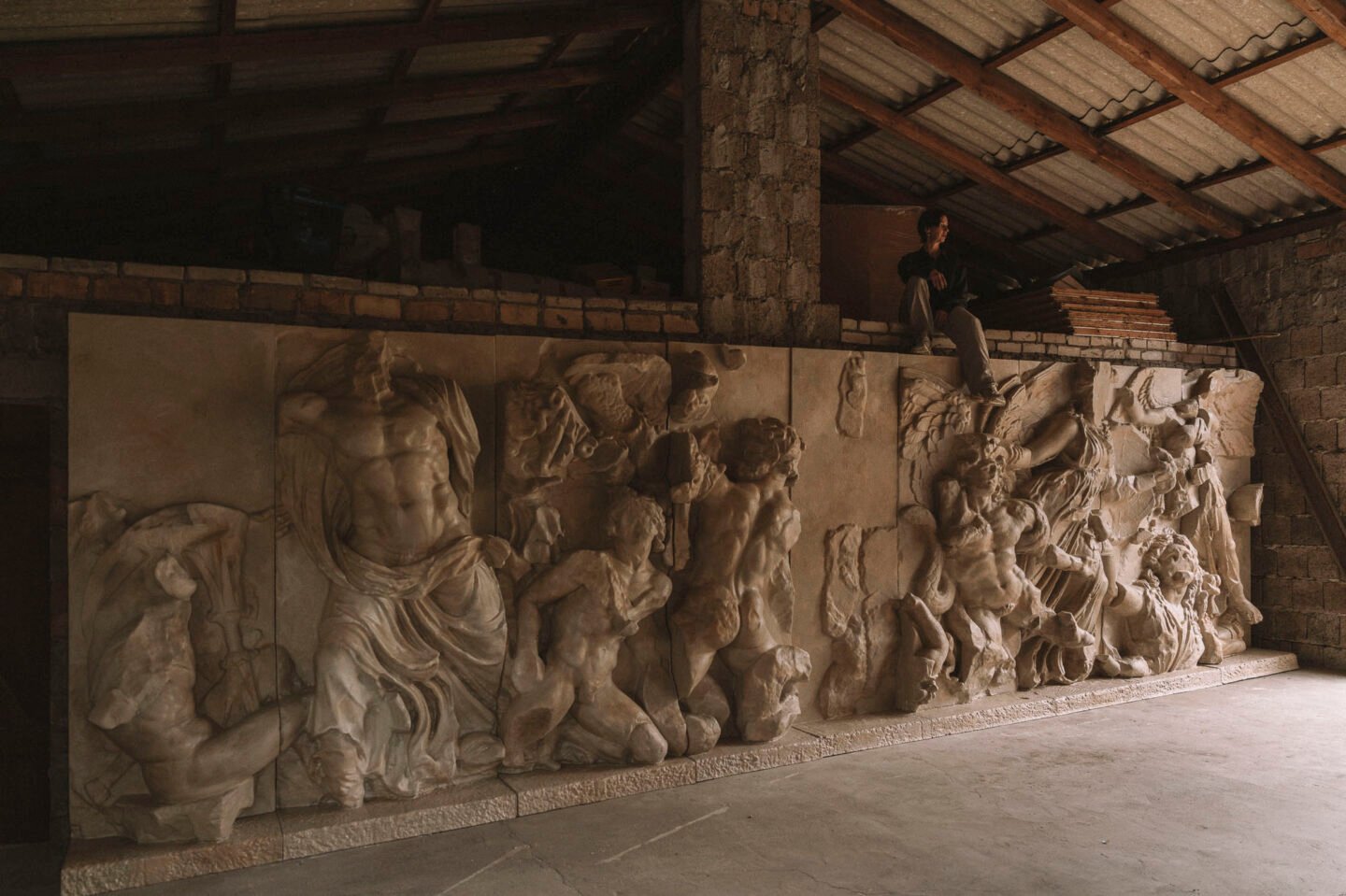

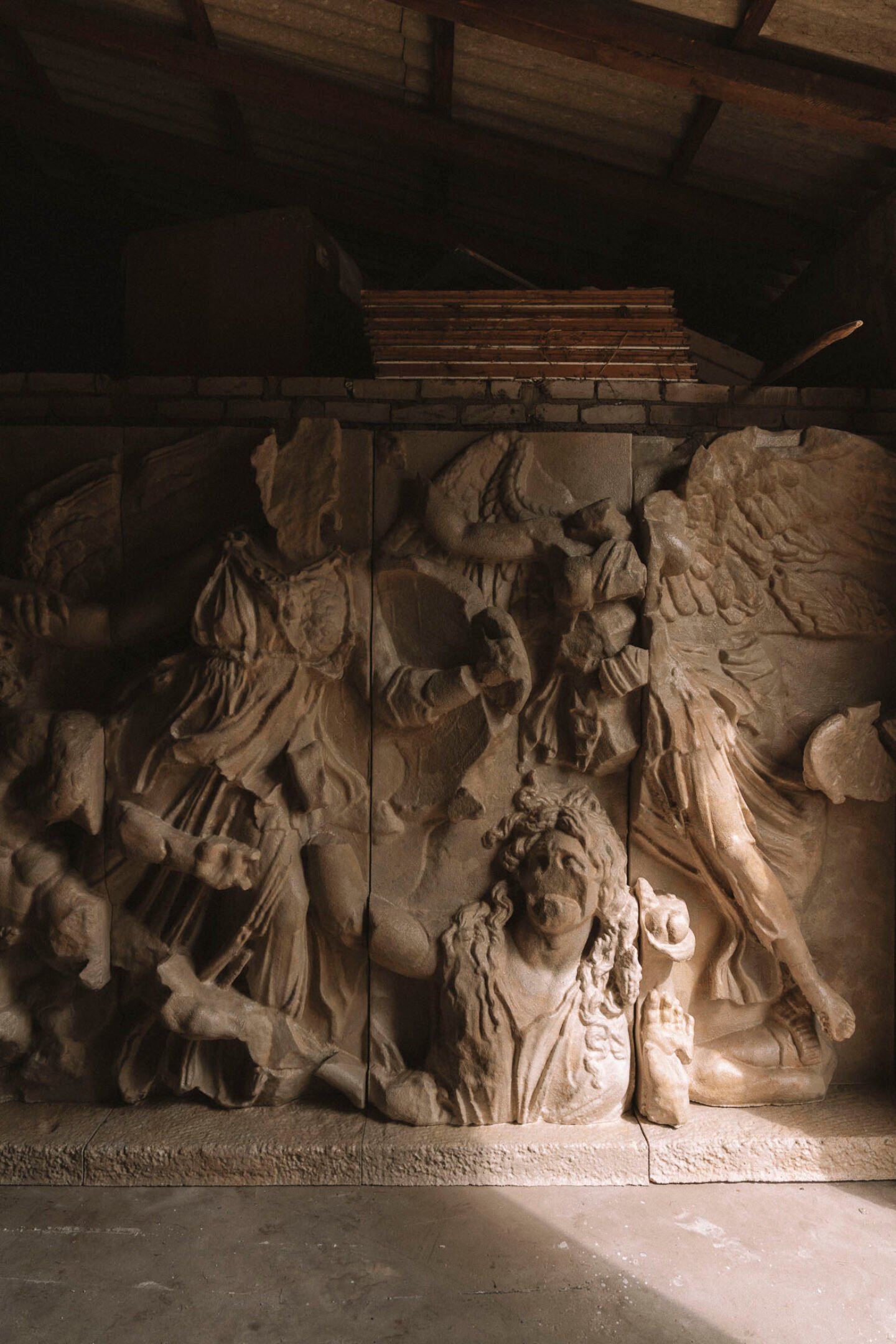
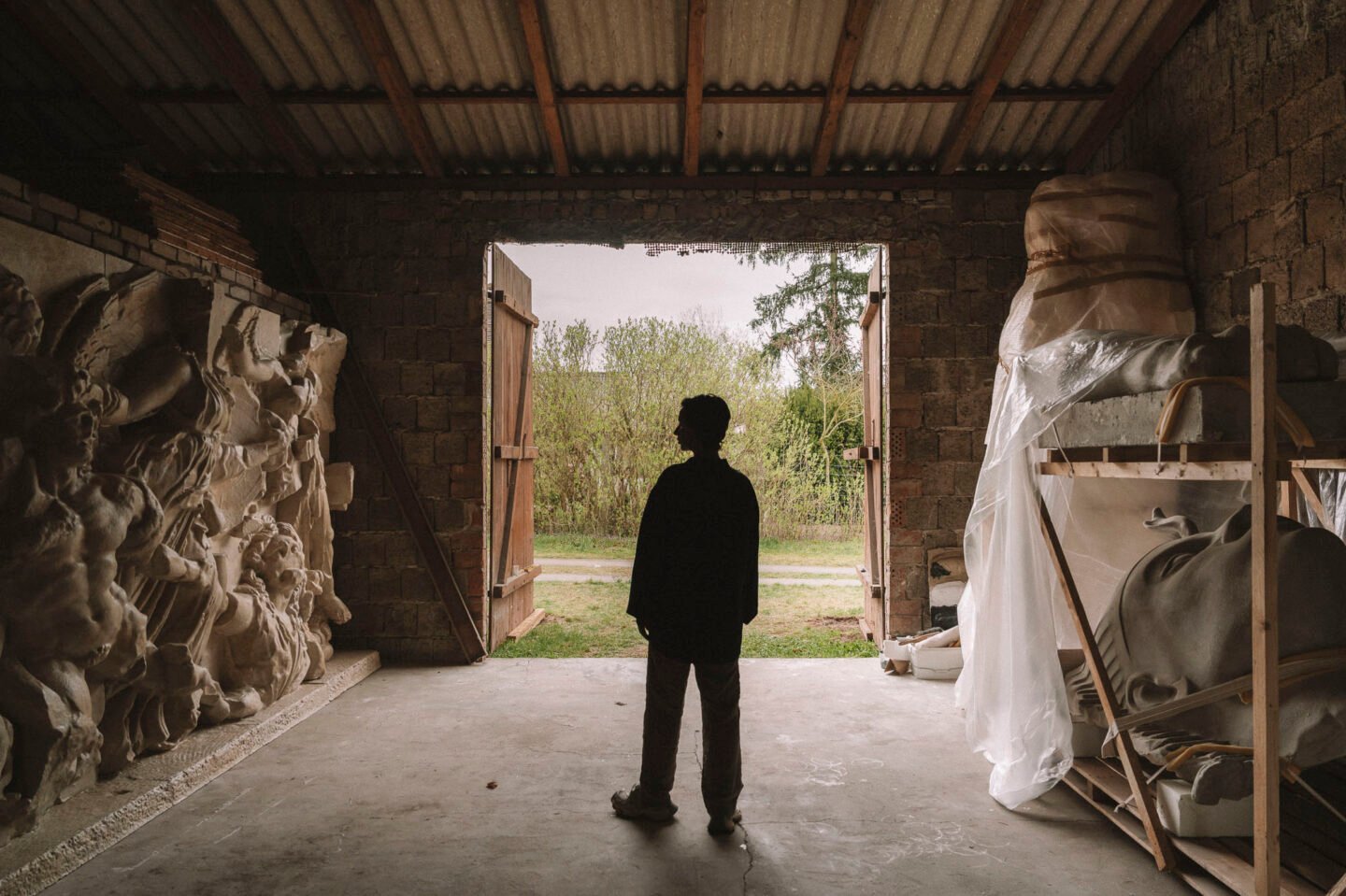
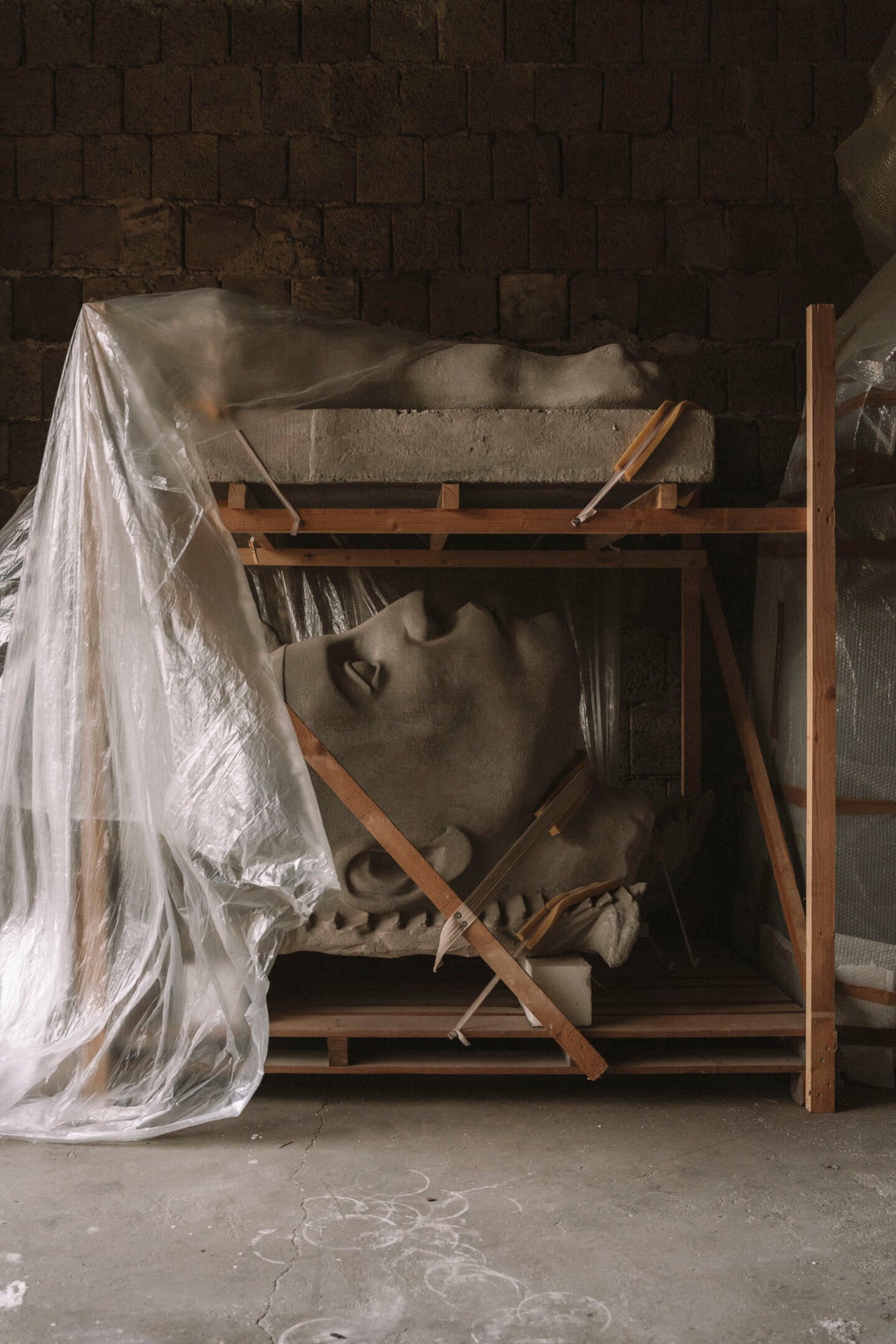

In All the Charm of a Rotting Gum, Czebatul’s fragmented frieze is paired with a second body of work that explores the visual language of authority: three large-scale reliefs that merge sacred geometry with police riot gear. Rendered in matte black and kaleidoscopic in appearance, they resemble the discarded exoskeletons of militarised insects from an alien planet. The symmetry of these forms suggests ritualistic devotion, a choreography of submission to higher powers. As Czebatul rightly notes, systems of control employ the same aesthetic strategies: “Imposing structures, ritualised behaviours, uniforms, armour, and decoration that evoke awe or fear. Whether it’s a temple, a riot police formation, or a cathedral, the goal is often the same: to control bodies, shape belief, and project unquestionable authority.”
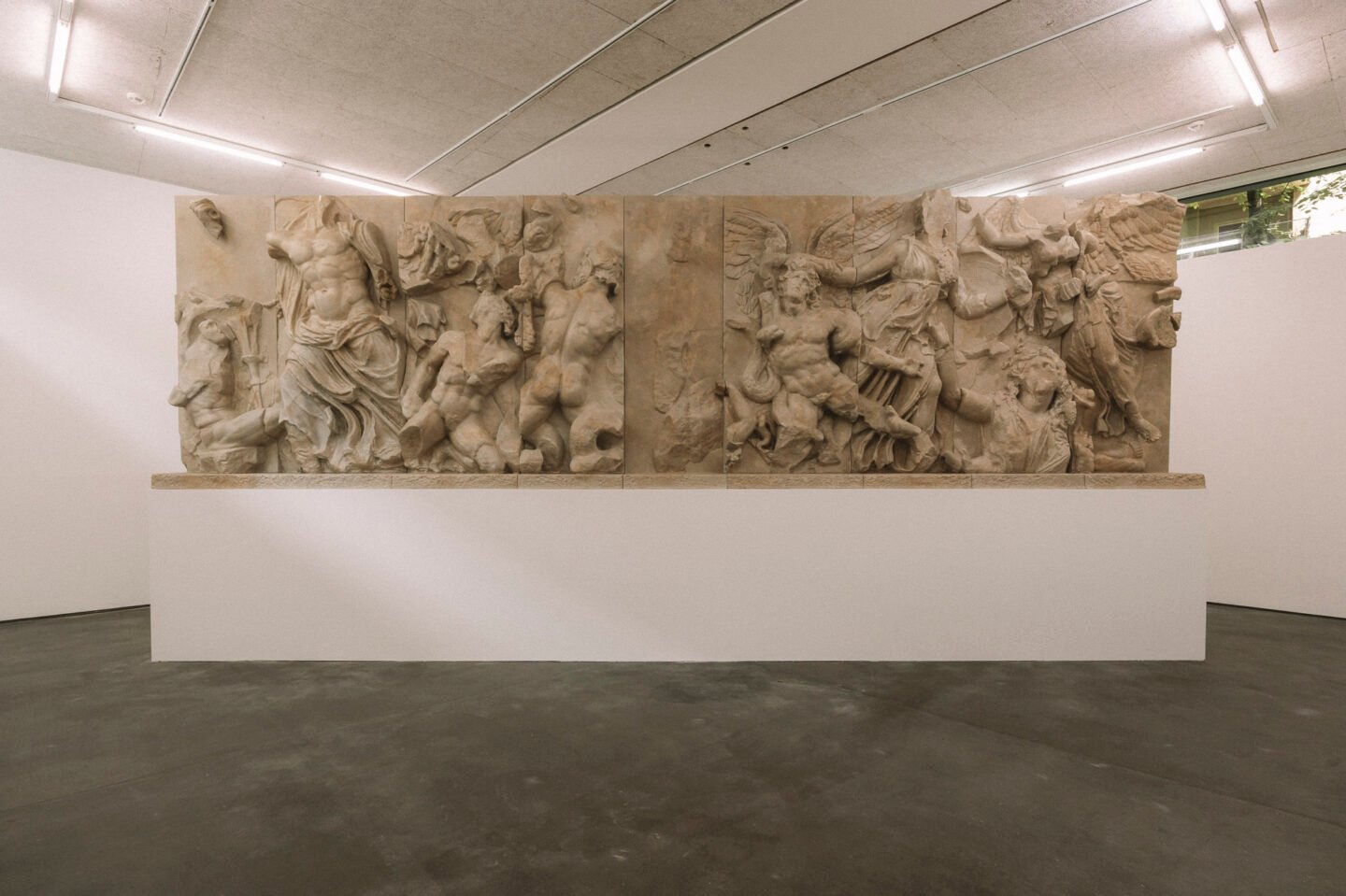
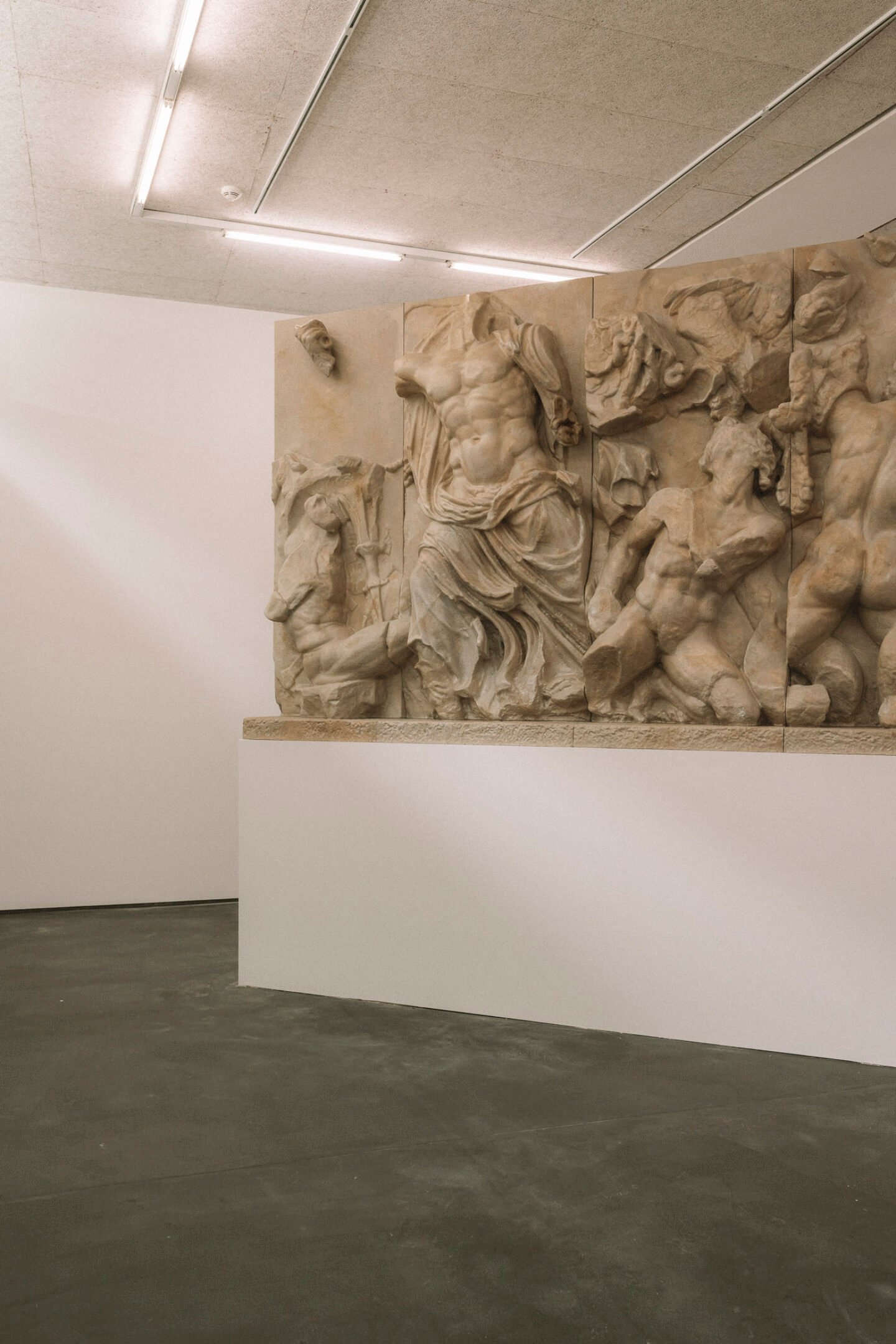
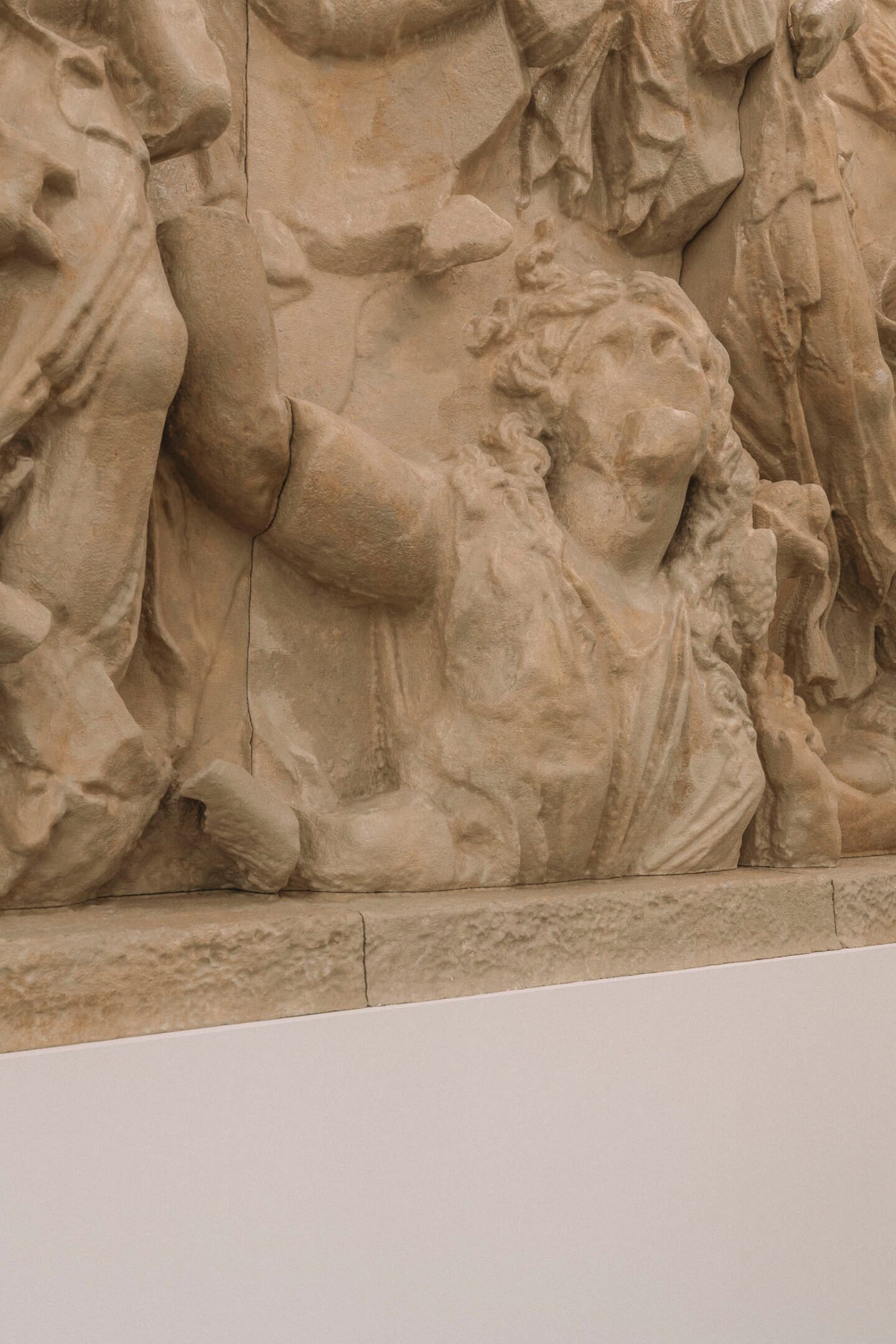
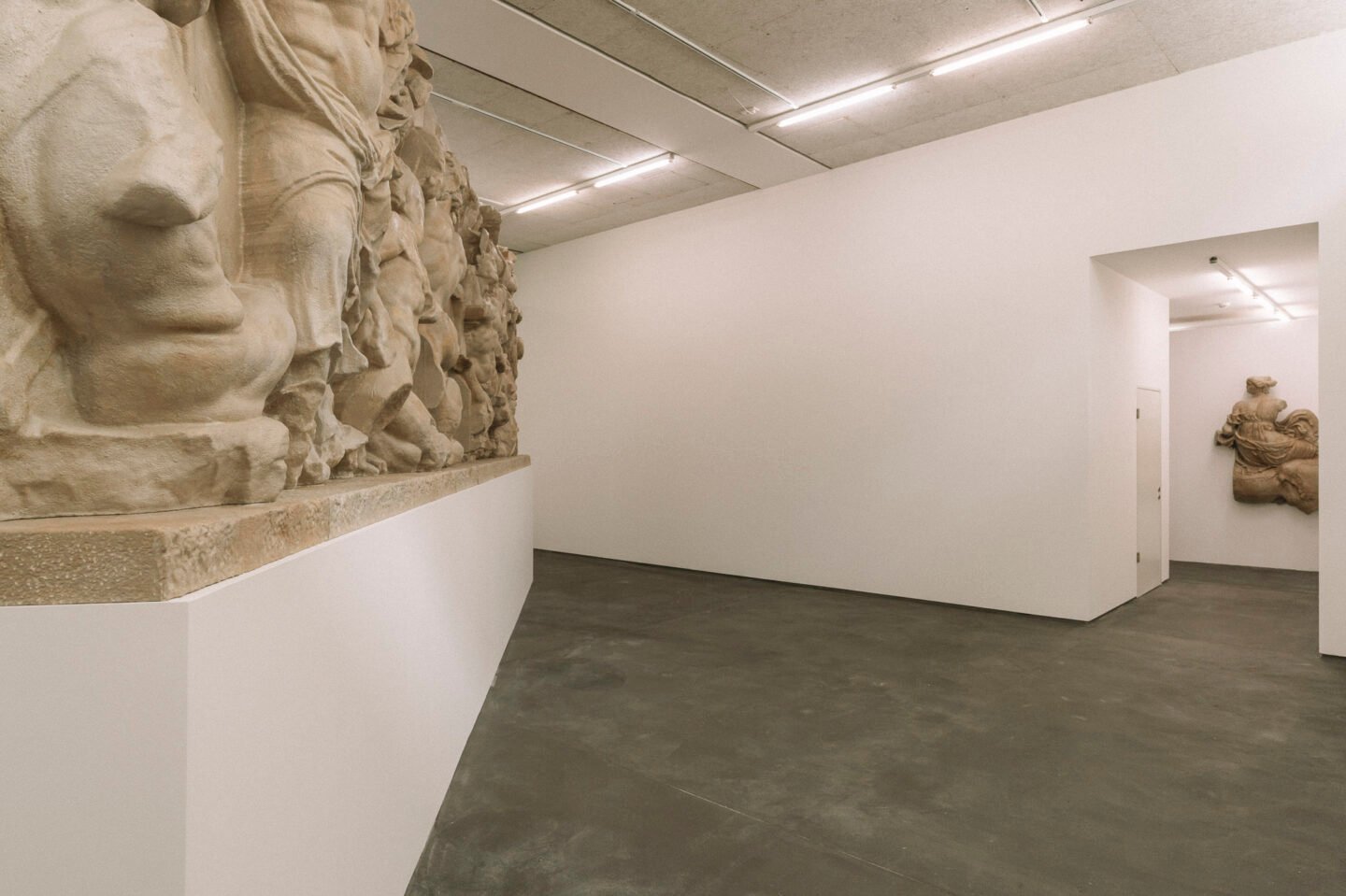
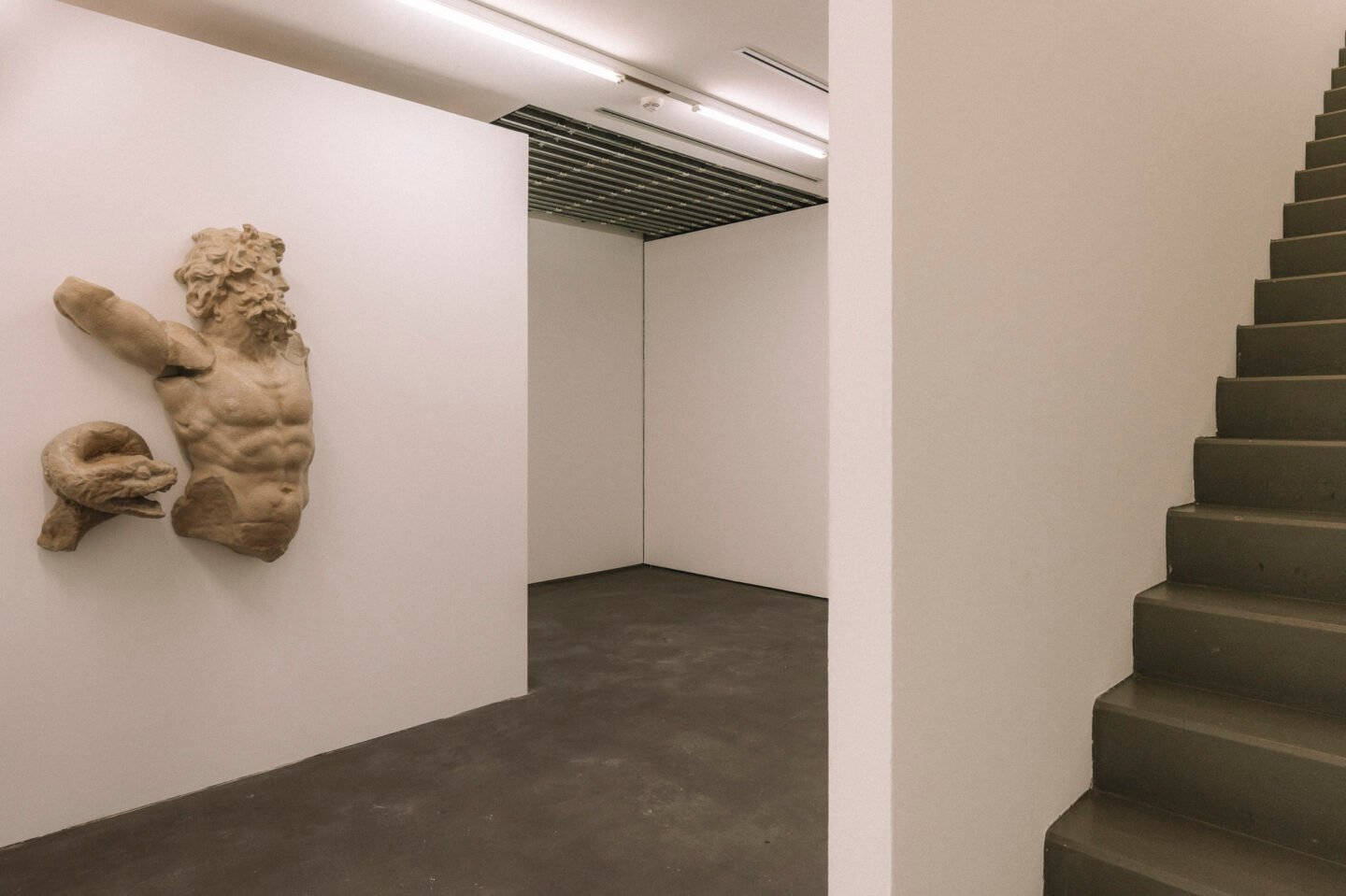
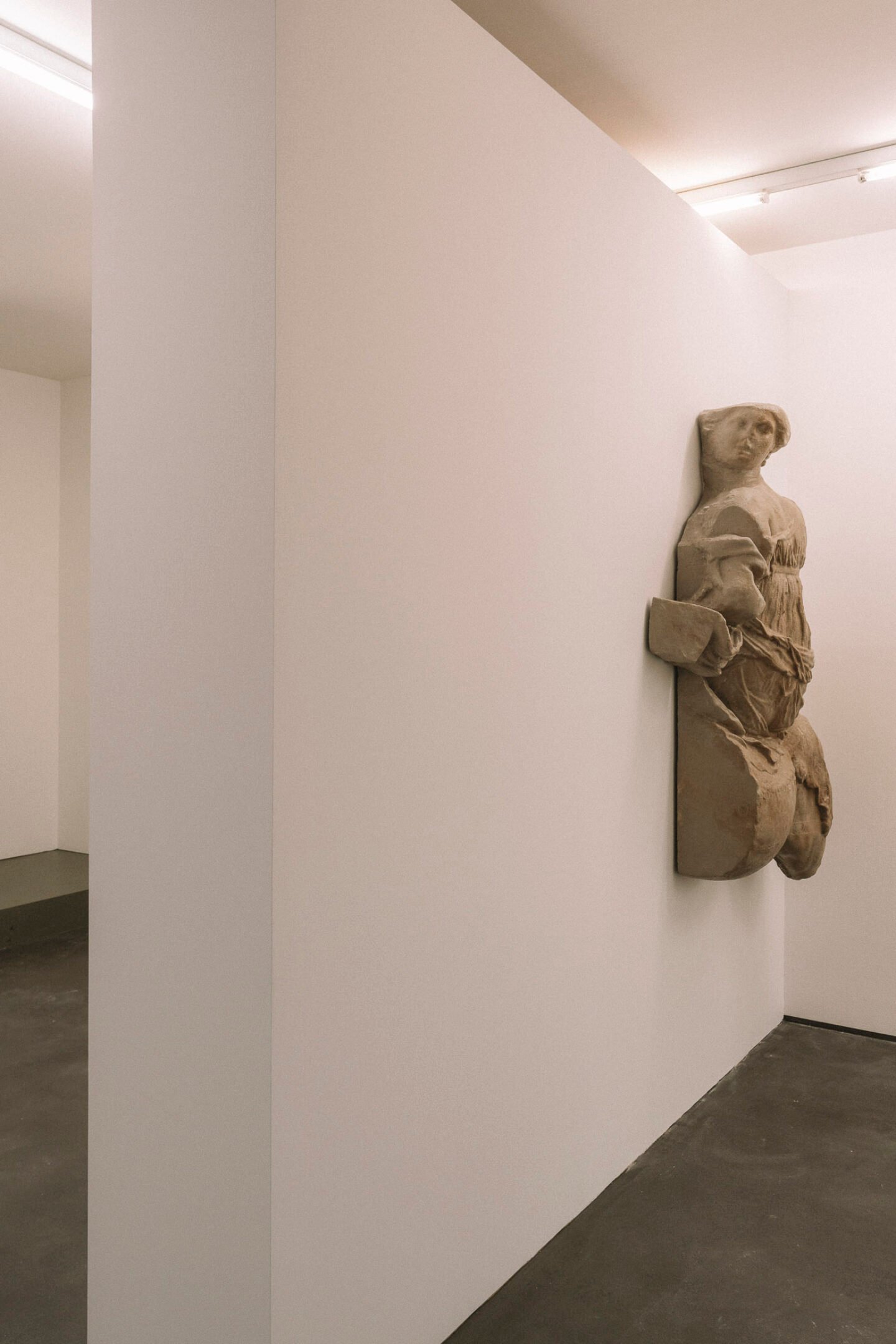
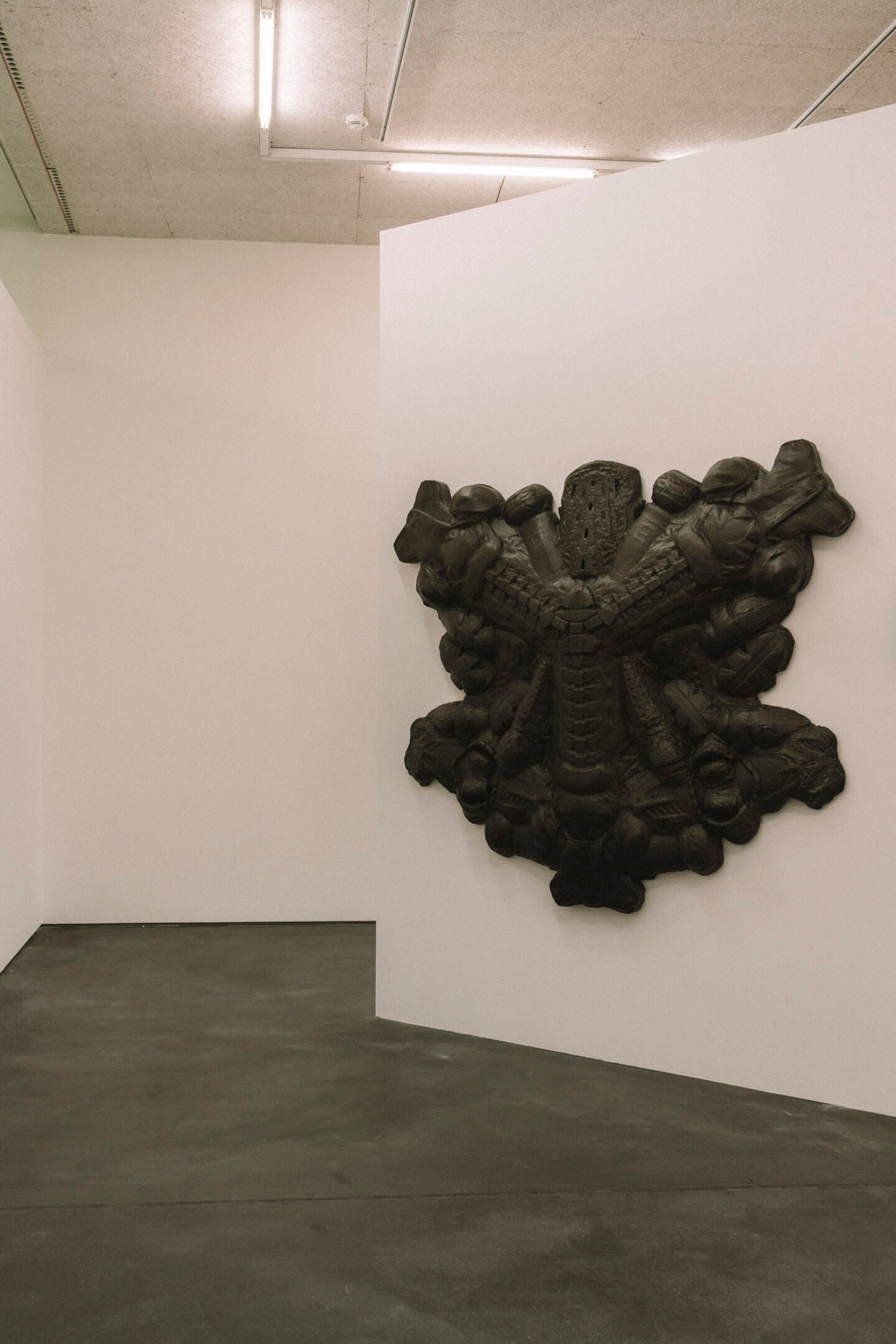
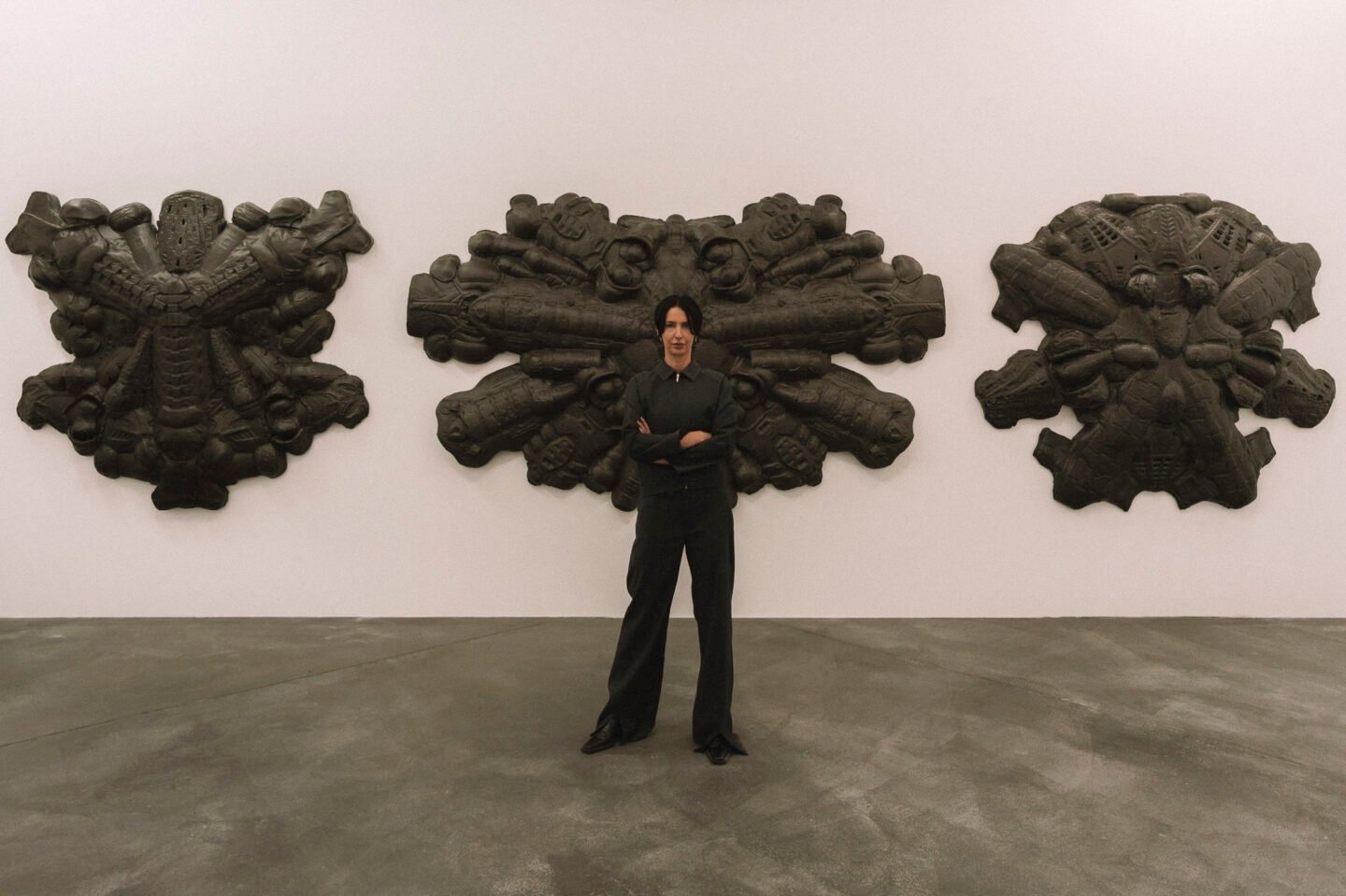
“History is a battleground of interpretations."
The exhibition’s title delivers its own visceral critique, pointing toward the persistence of systems that no longer serve us—relics of control that stick around long after their flavour has gone. In All the Charm of a Rotting Gum, power is revealed and recast, becoming provisional and permeable. “History is a battleground of interpretations. Myths present themselves as eternal truths, but they were always designed to explain, justify, and legitimise certain structures of power,” Czebatul says. “By fragmenting, queering, or reconfiguring these stories, we reclaim space for the excluded, the hybrid, the unruly. It reminds us that the narratives shaping our world are not inevitable—they are constructed, and they can be reconstructed.”
All the Charm of a Rotting Gum by Zuzanna Czebatul is on view at DITTRICH & SCHLECHTRIEM Berlin until June 21, 2025.
Photos: Clemens Poloczek | Text: Rosie Flanagan
